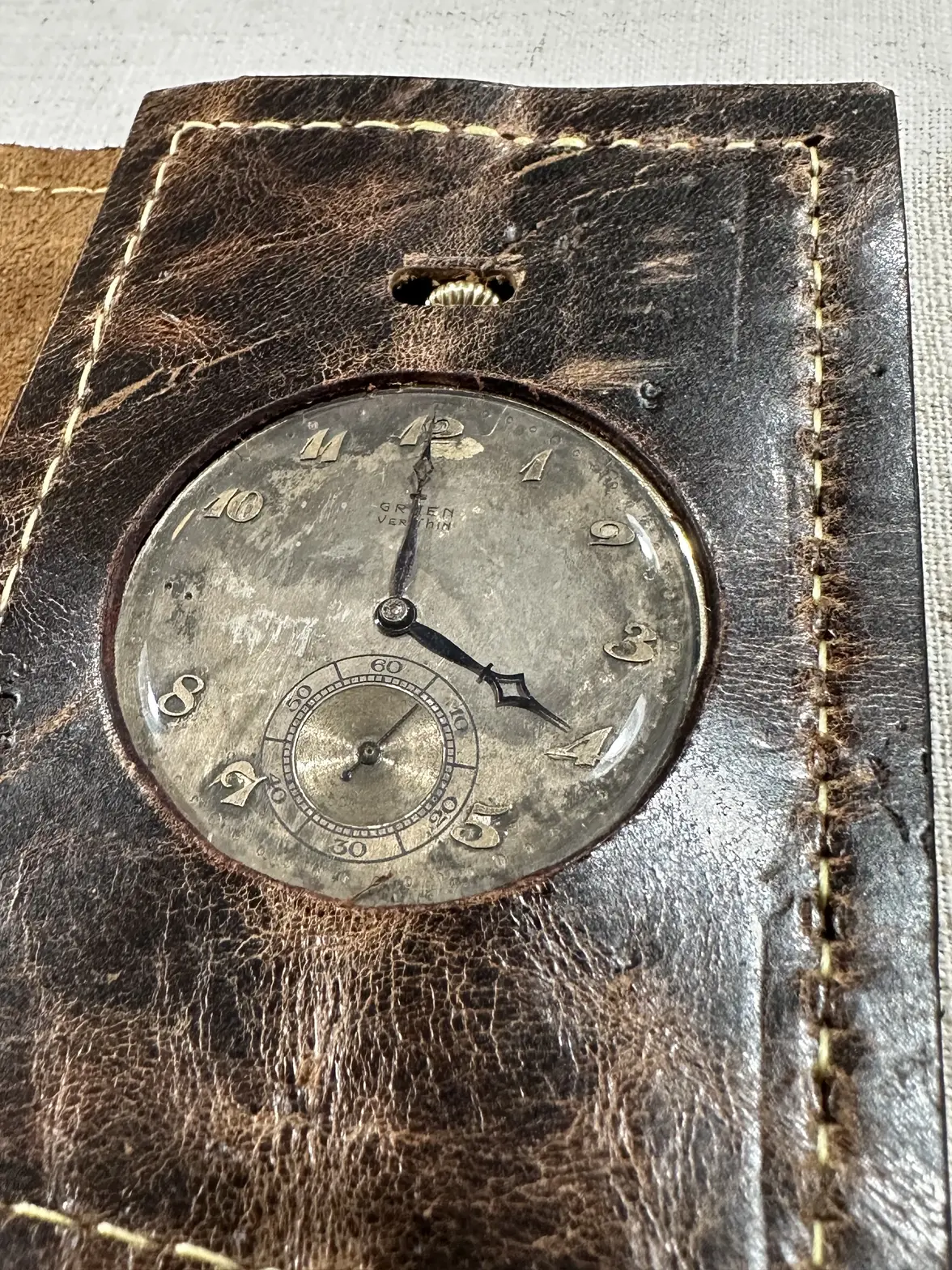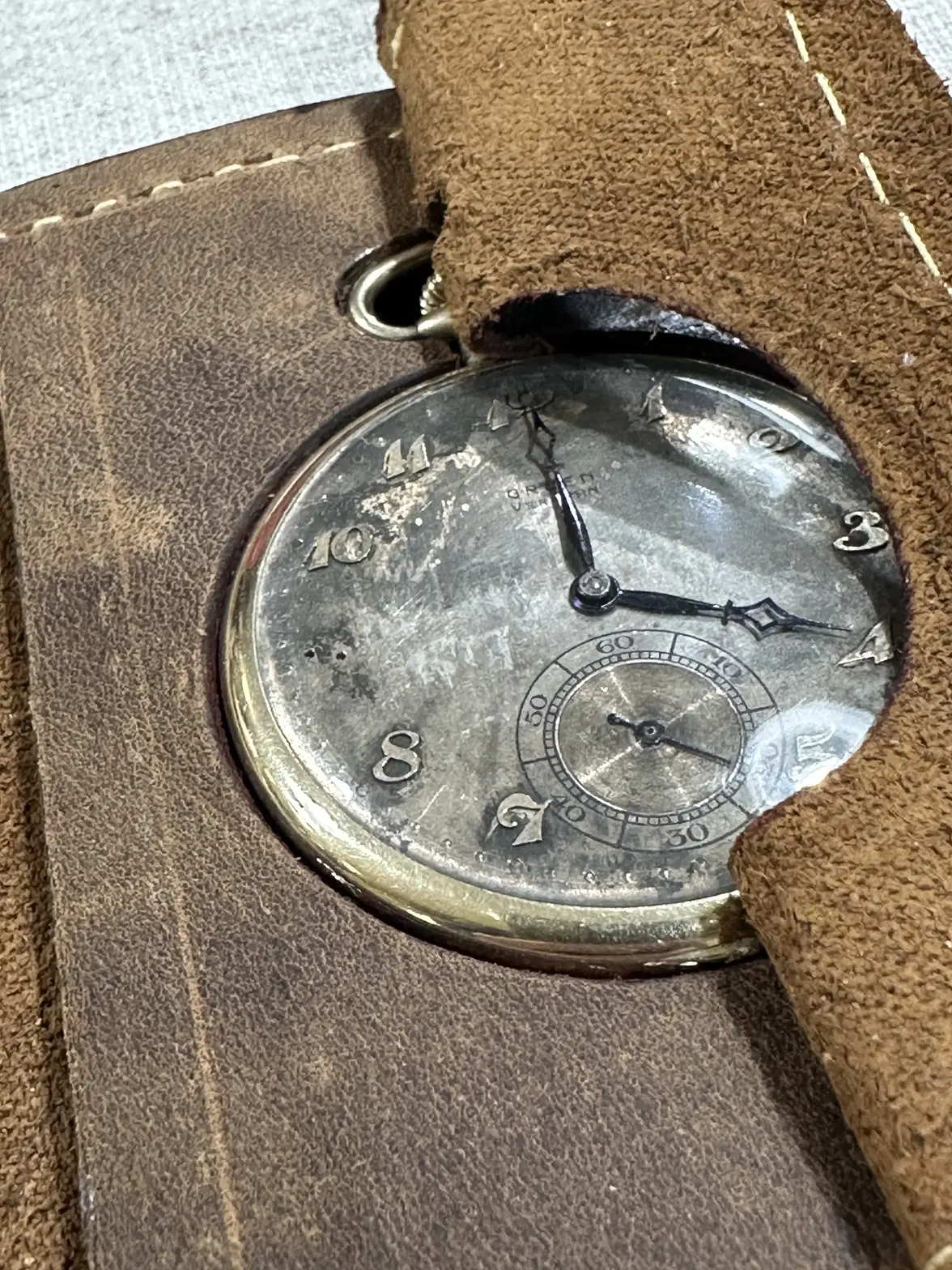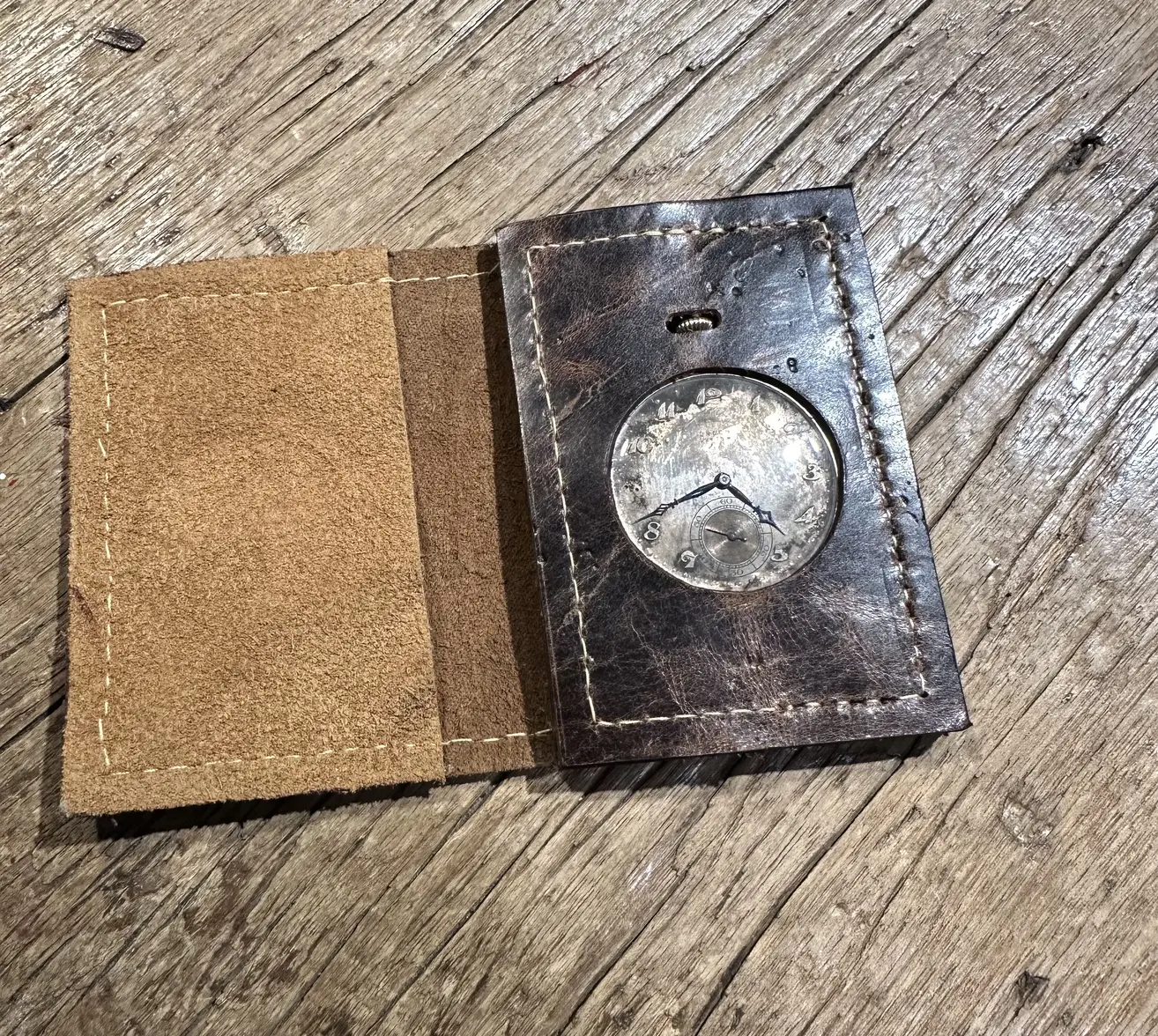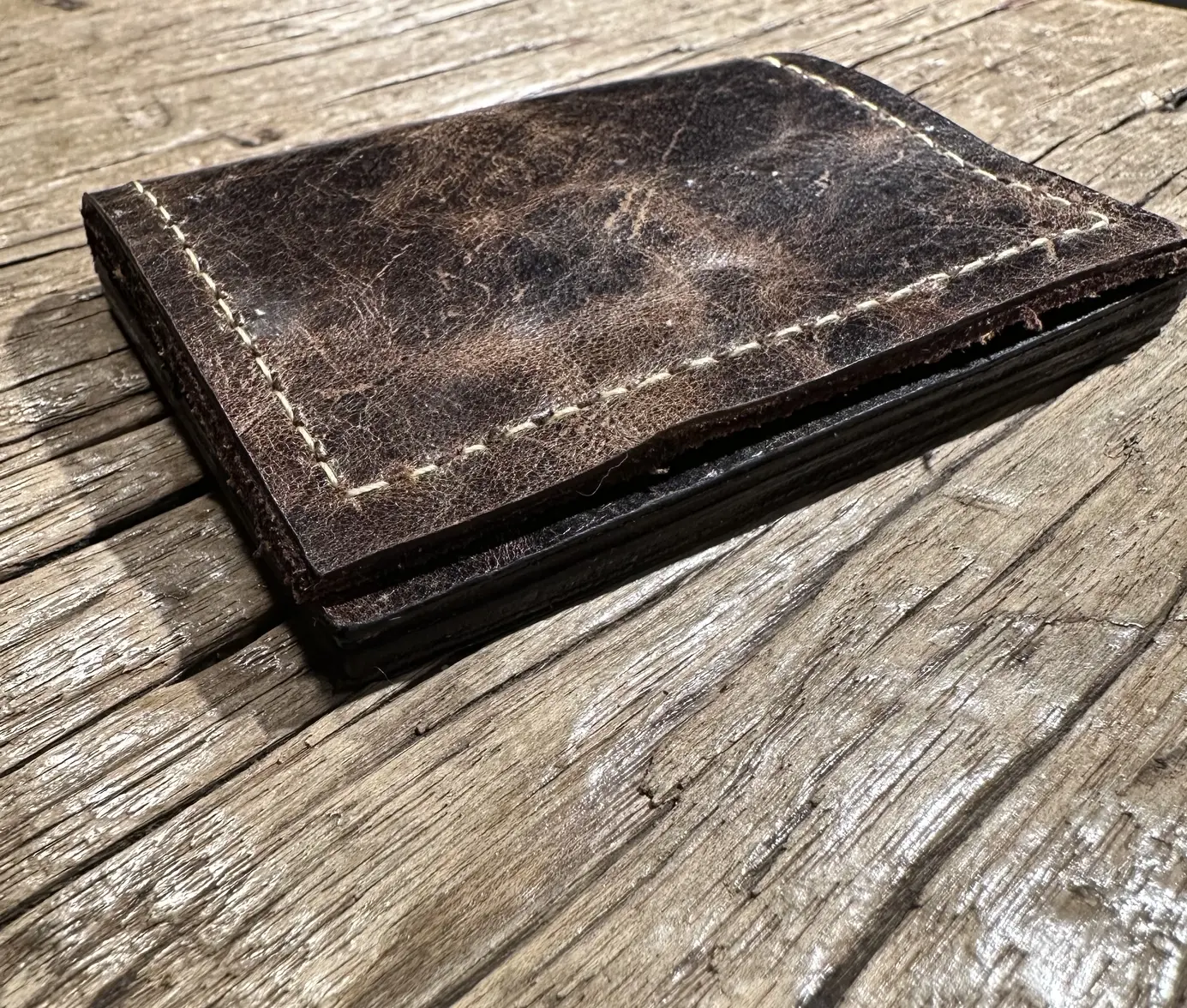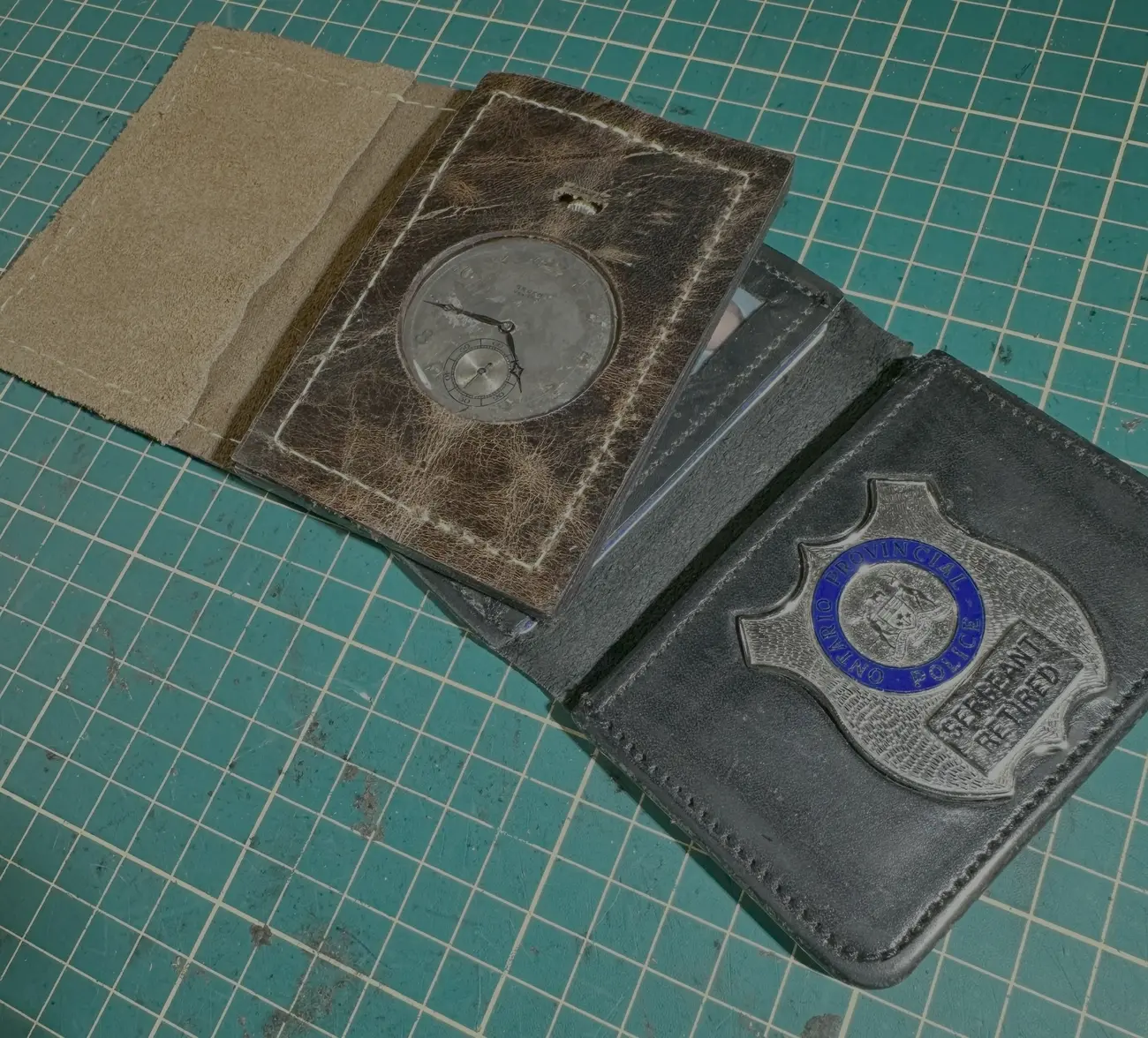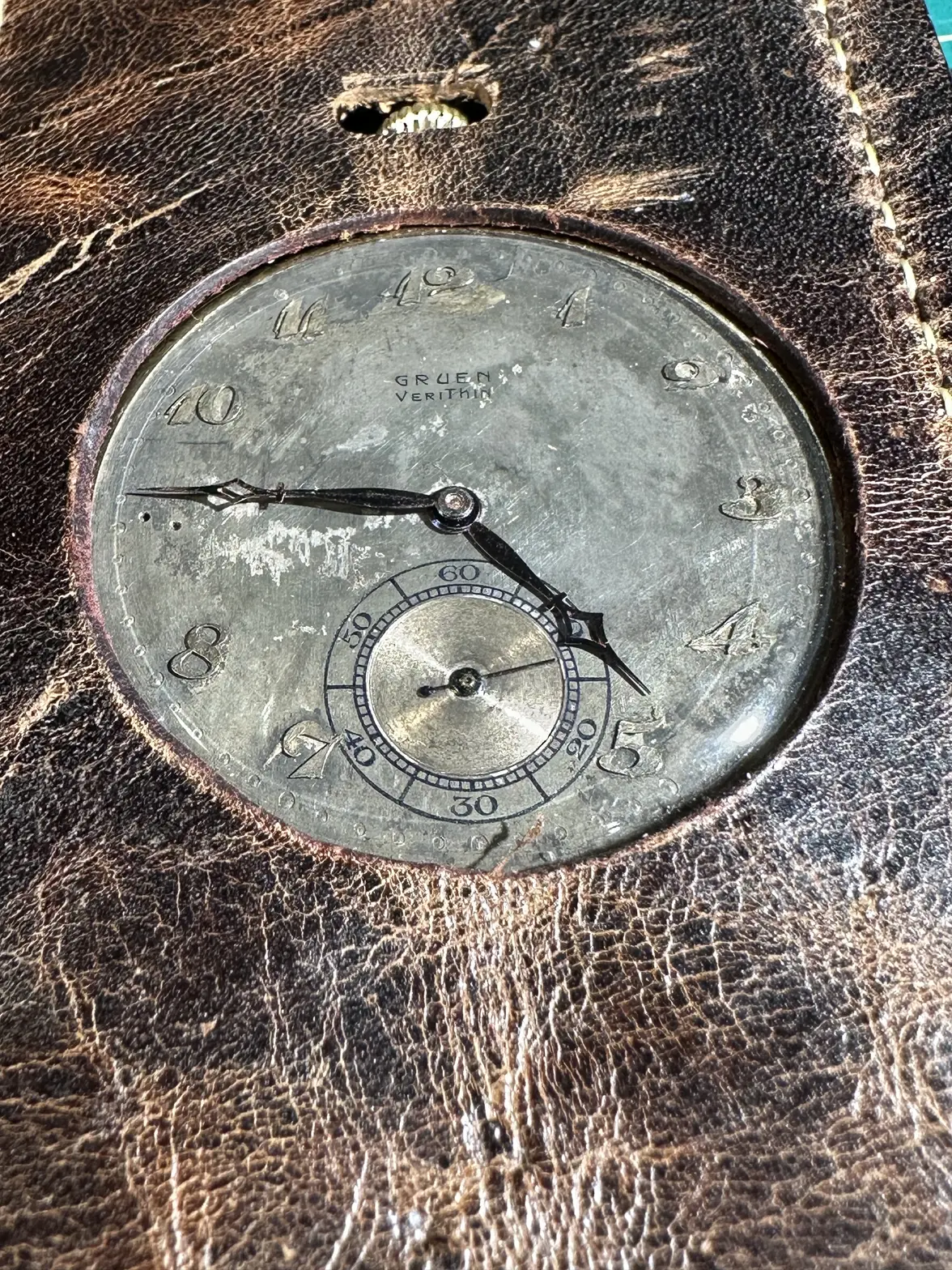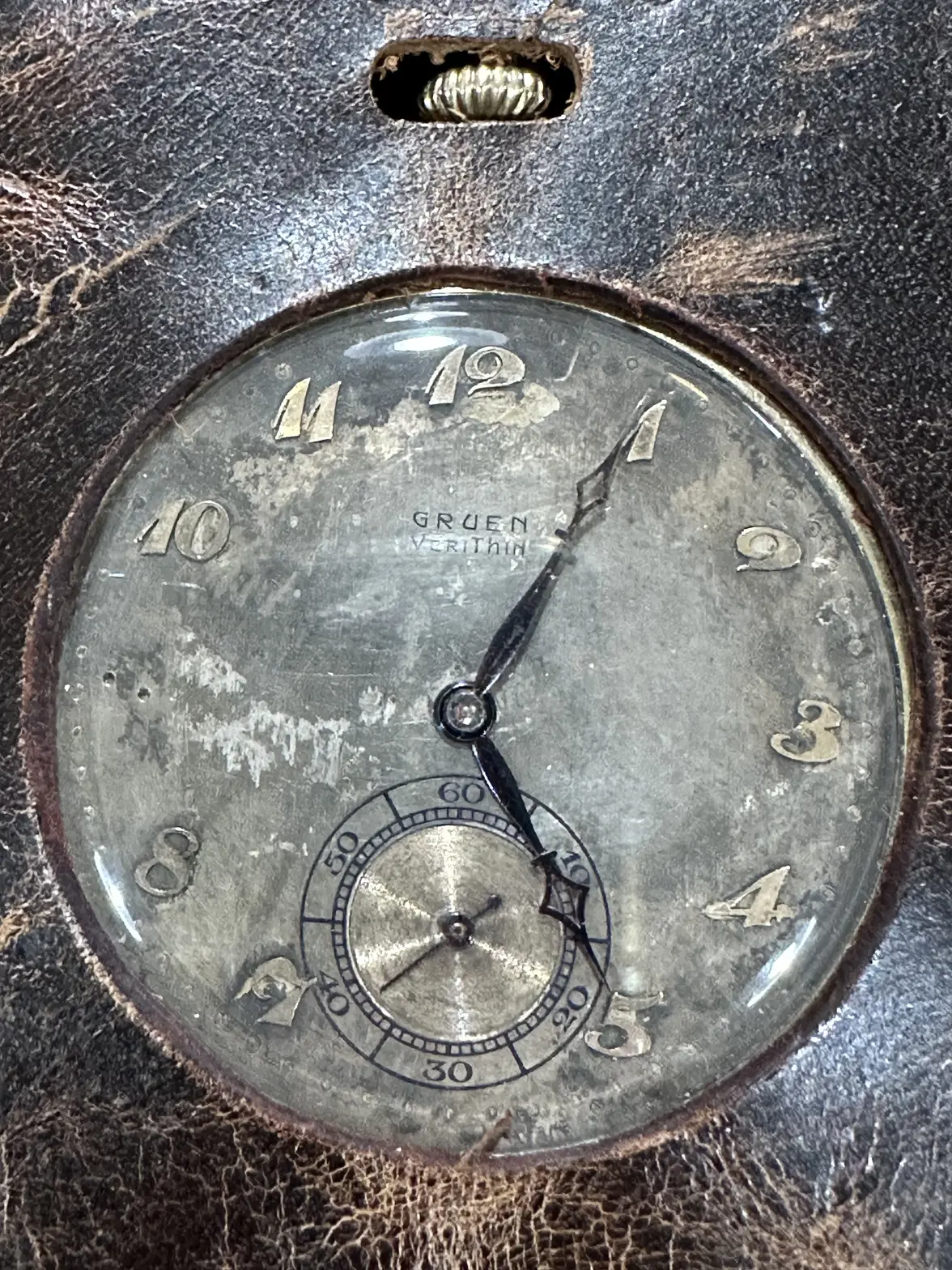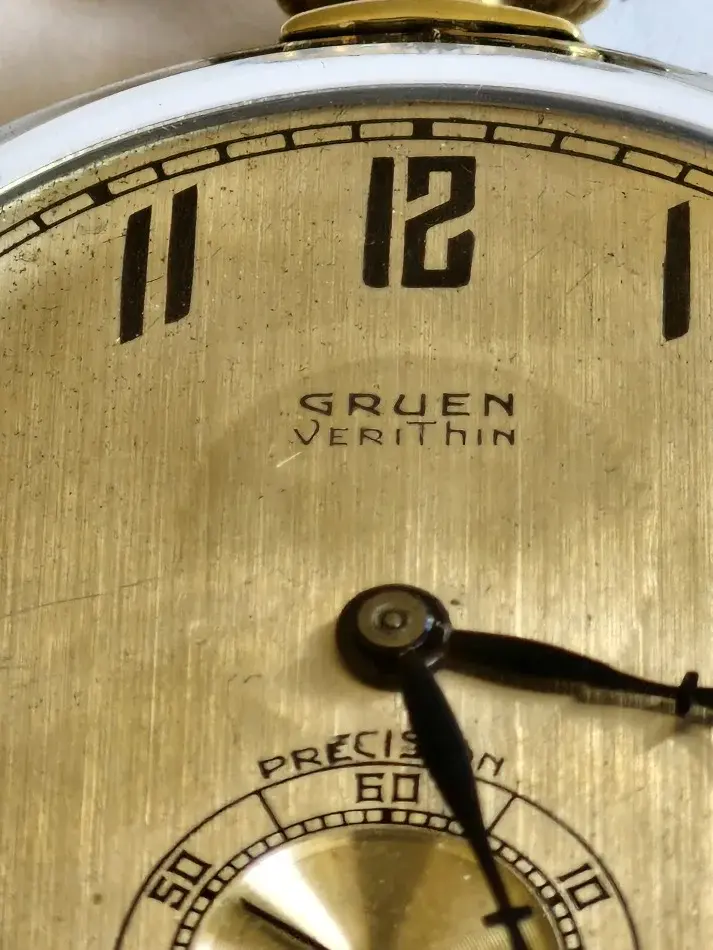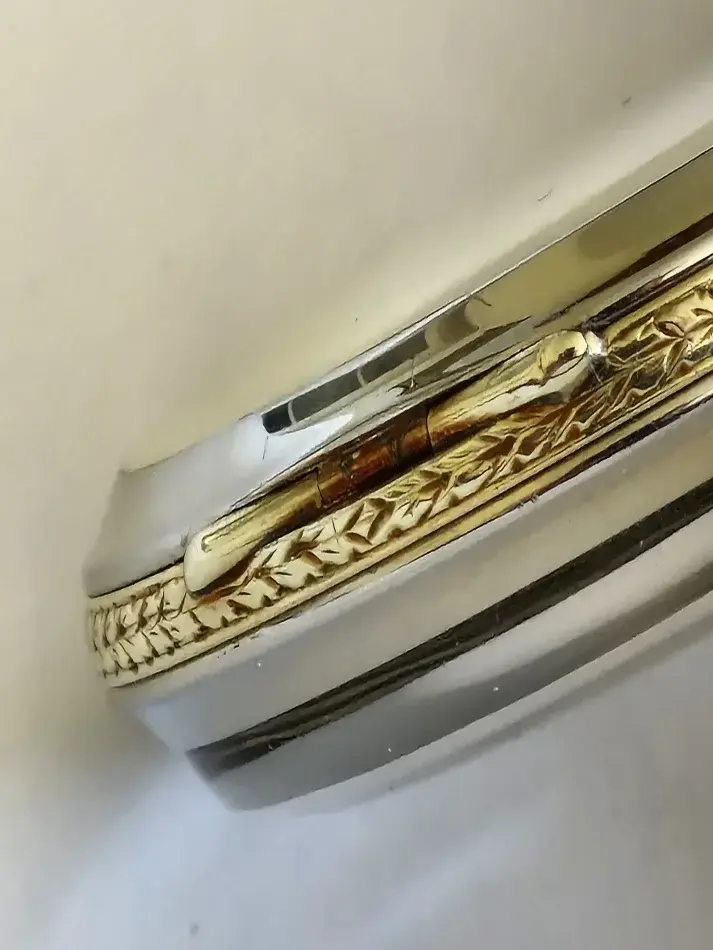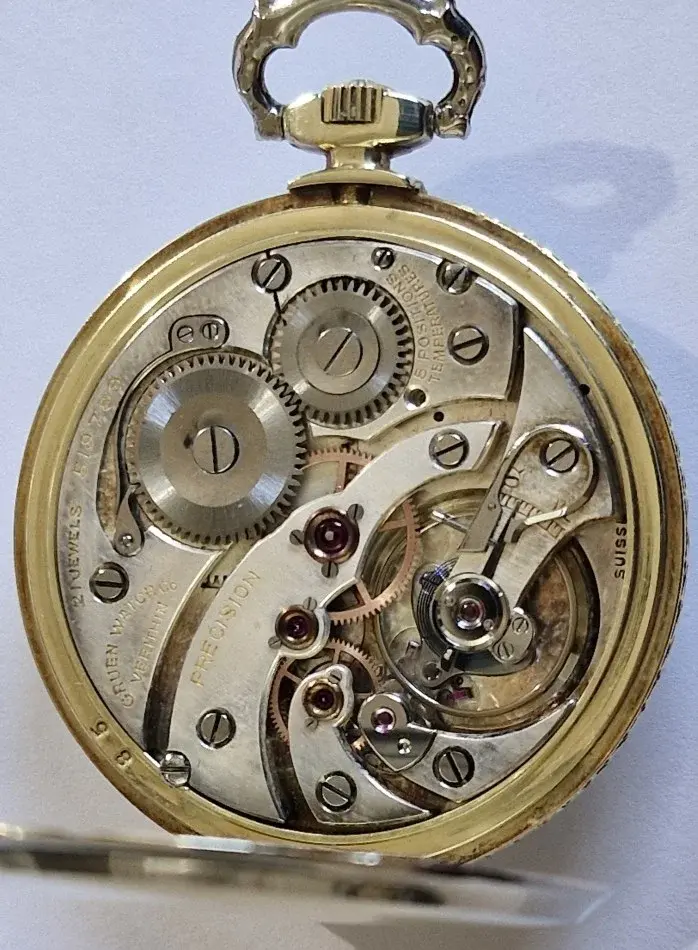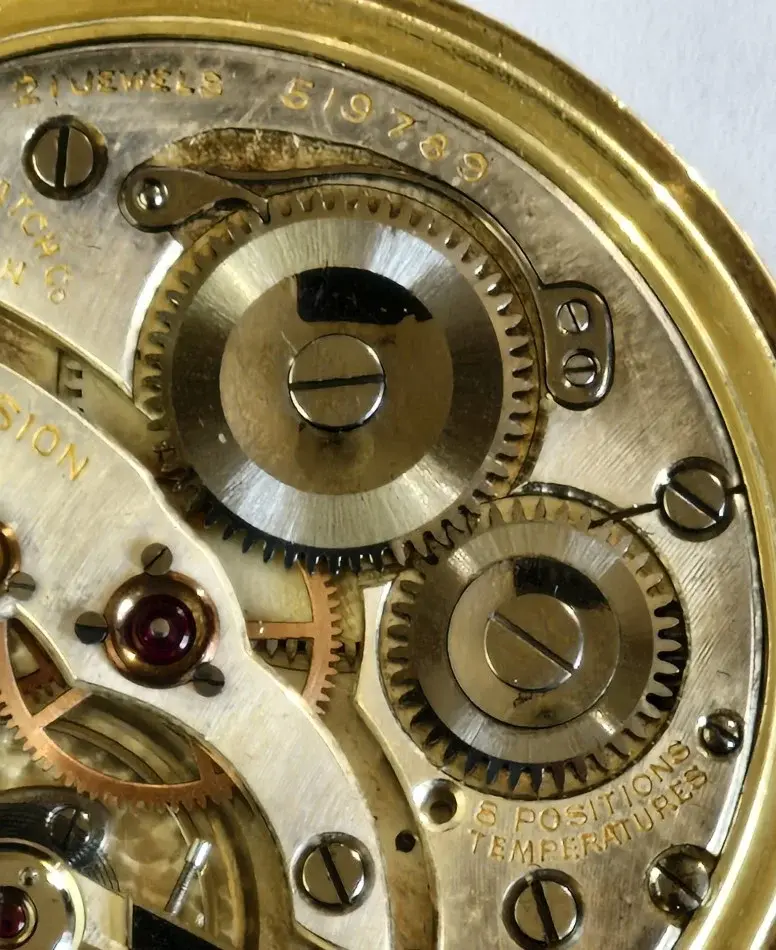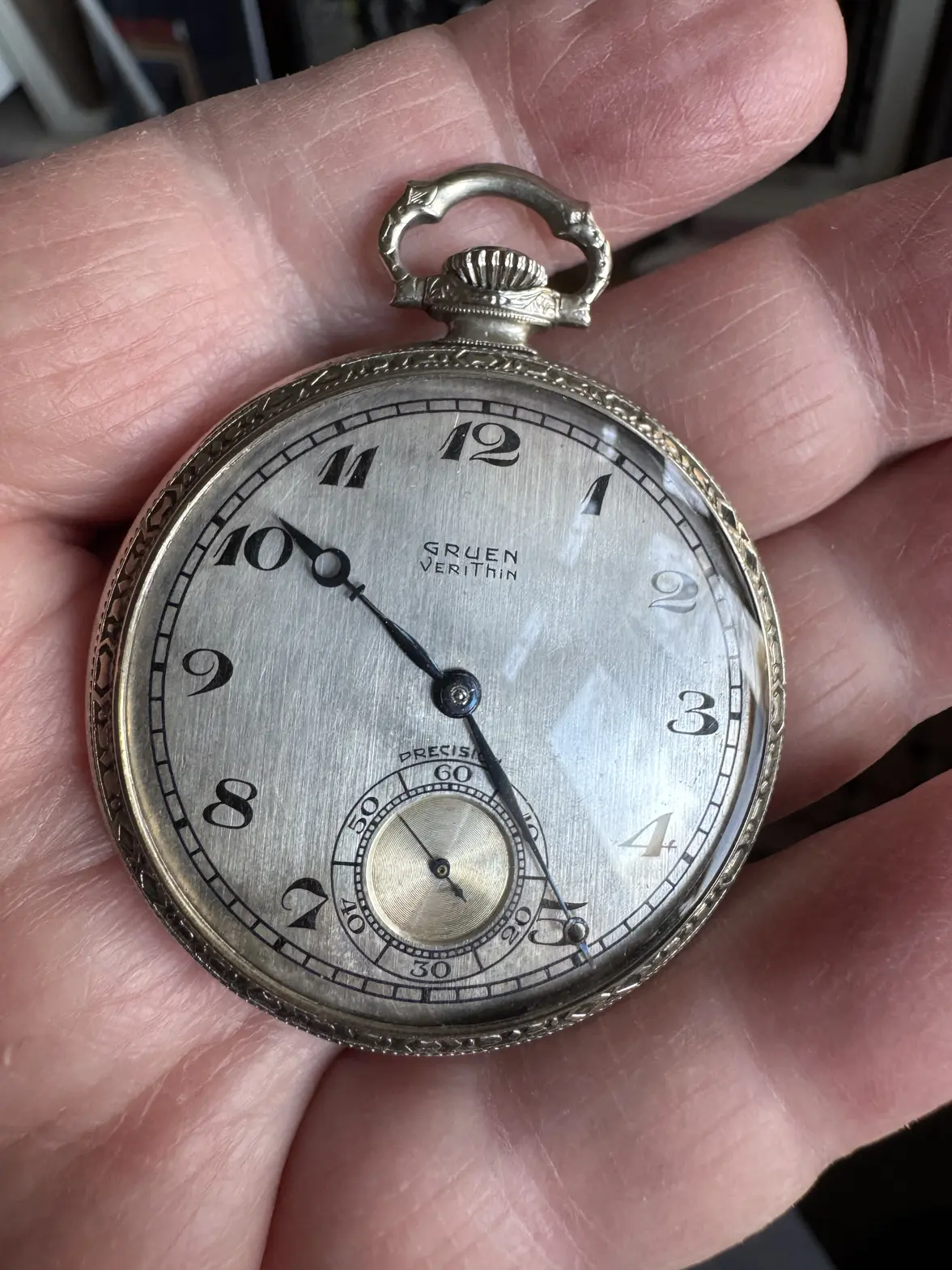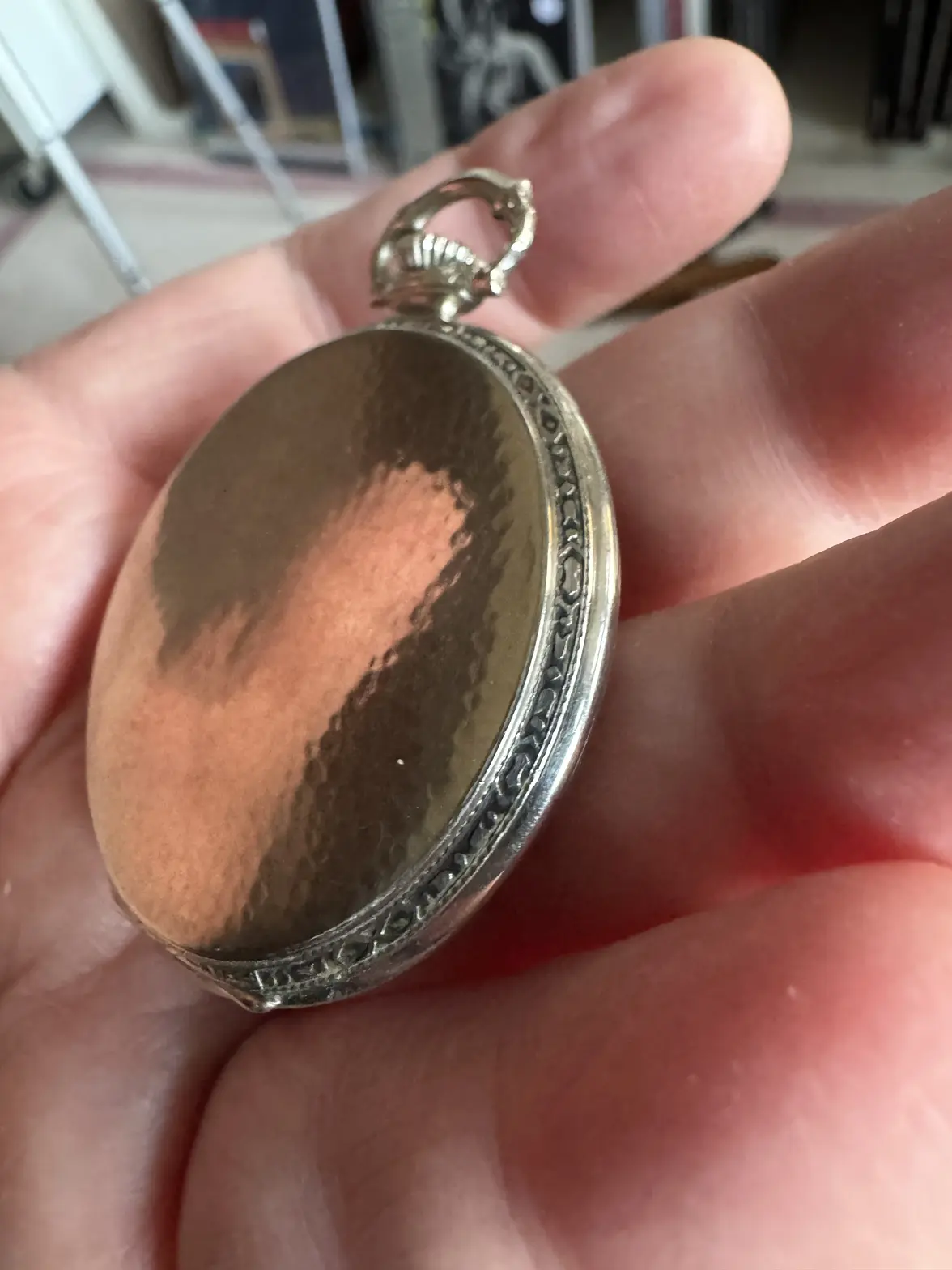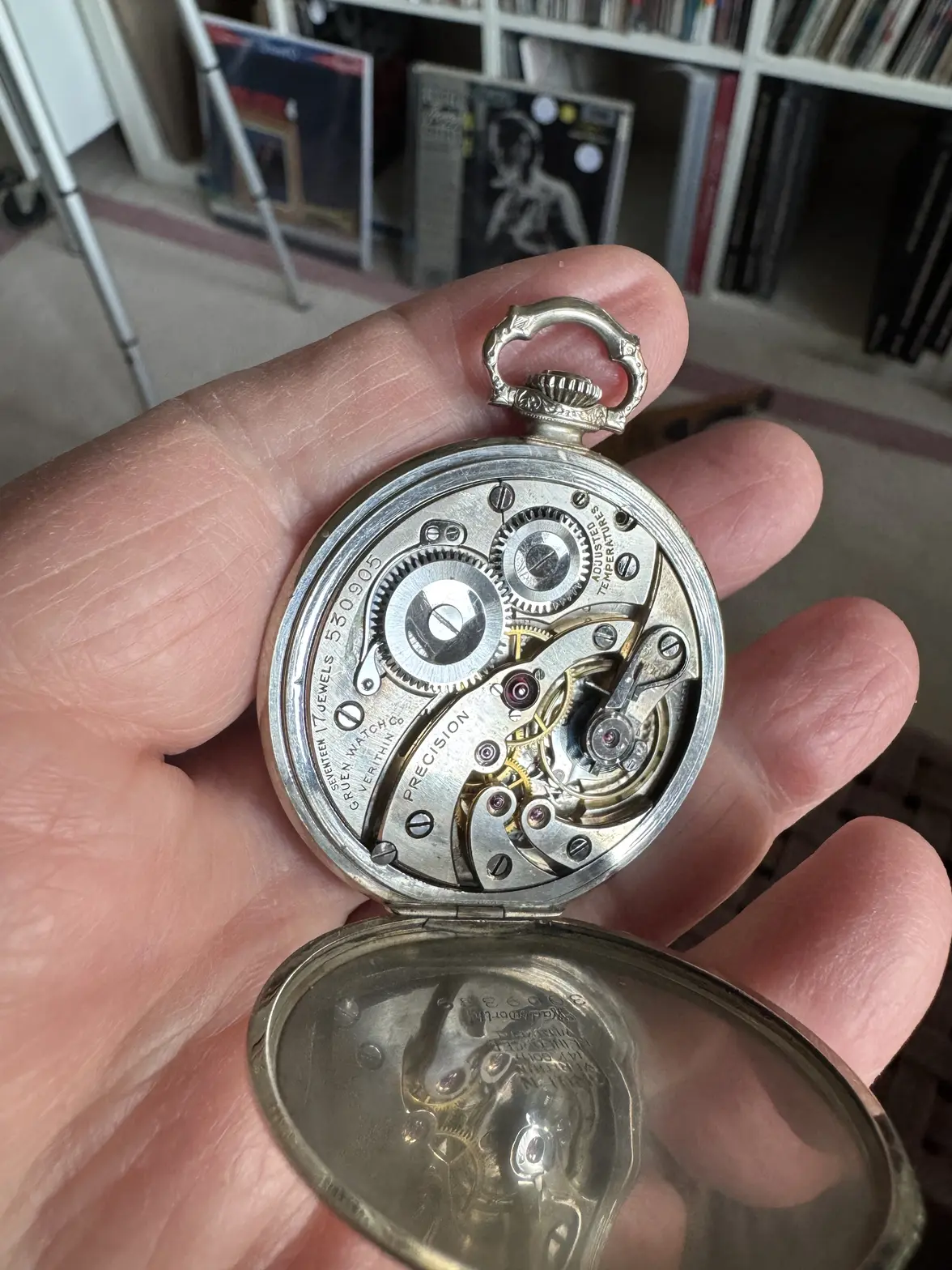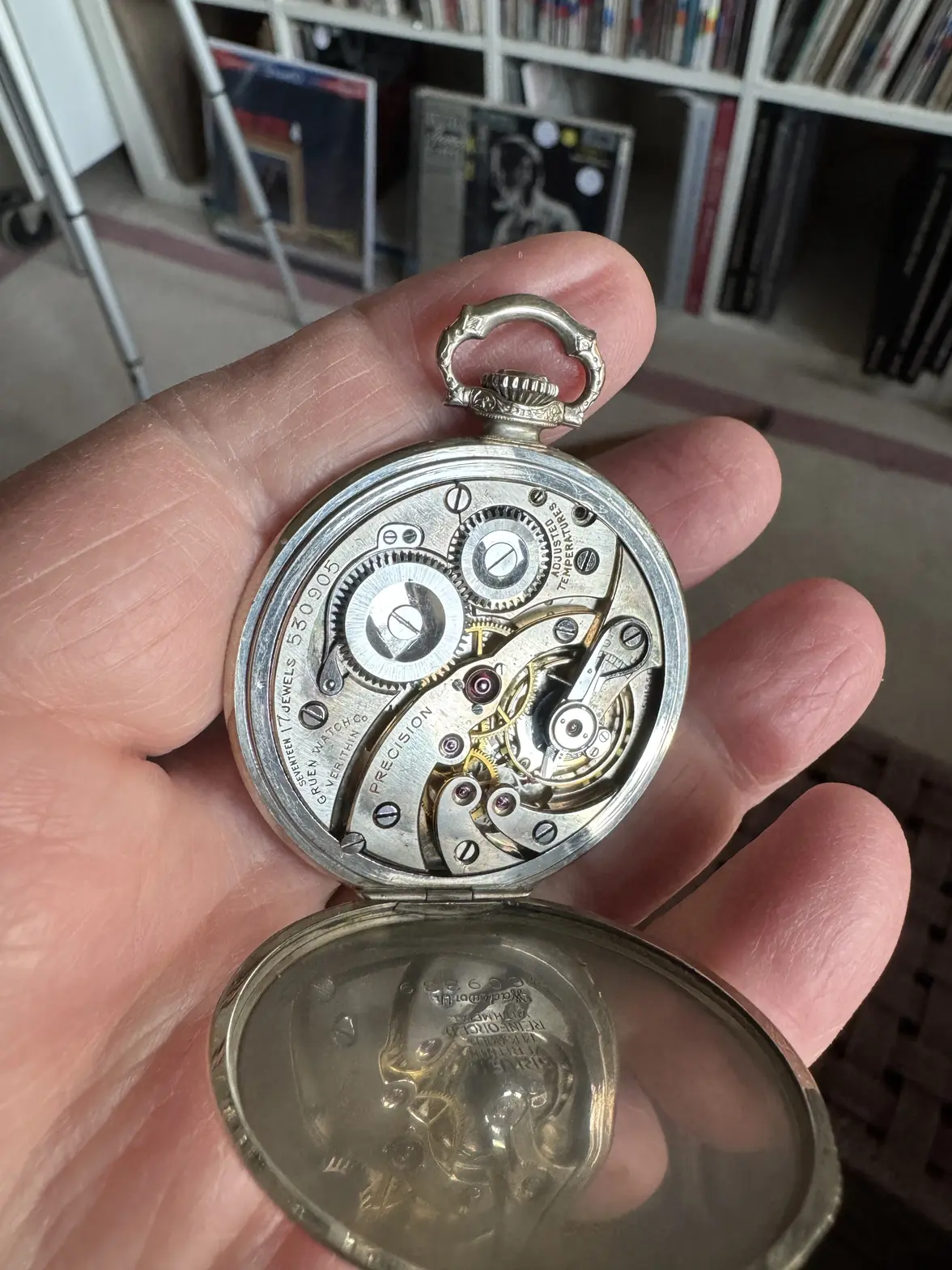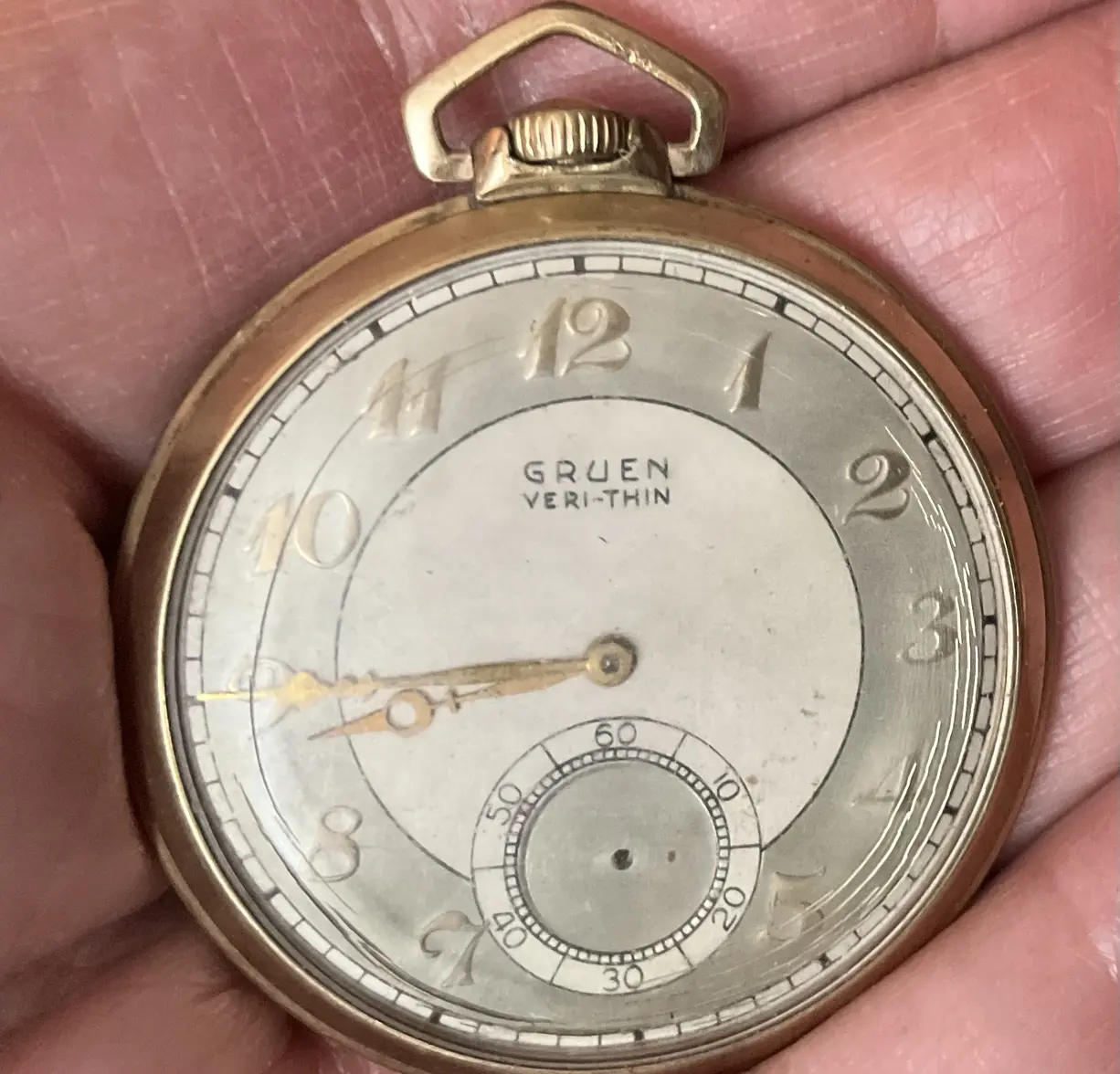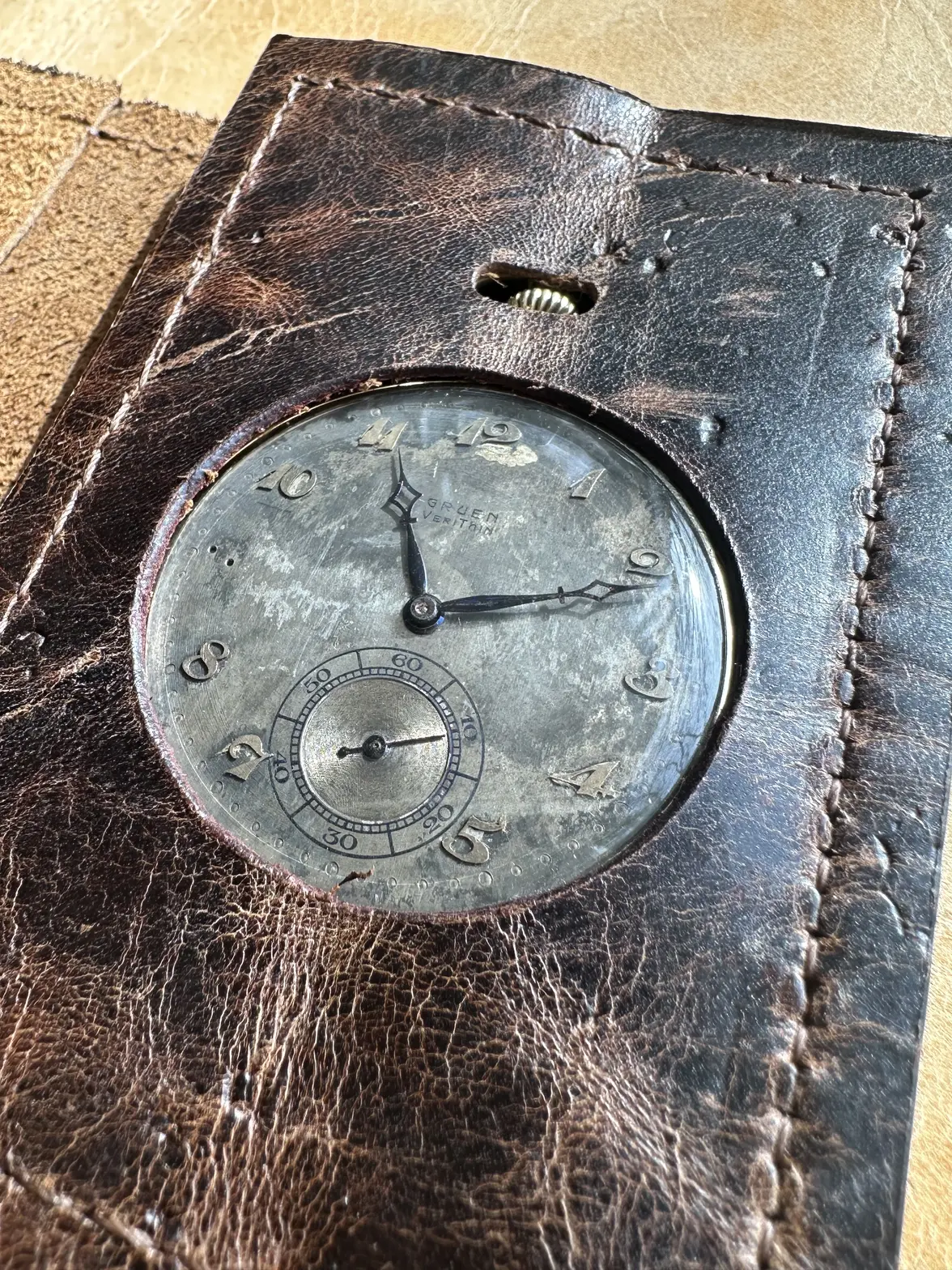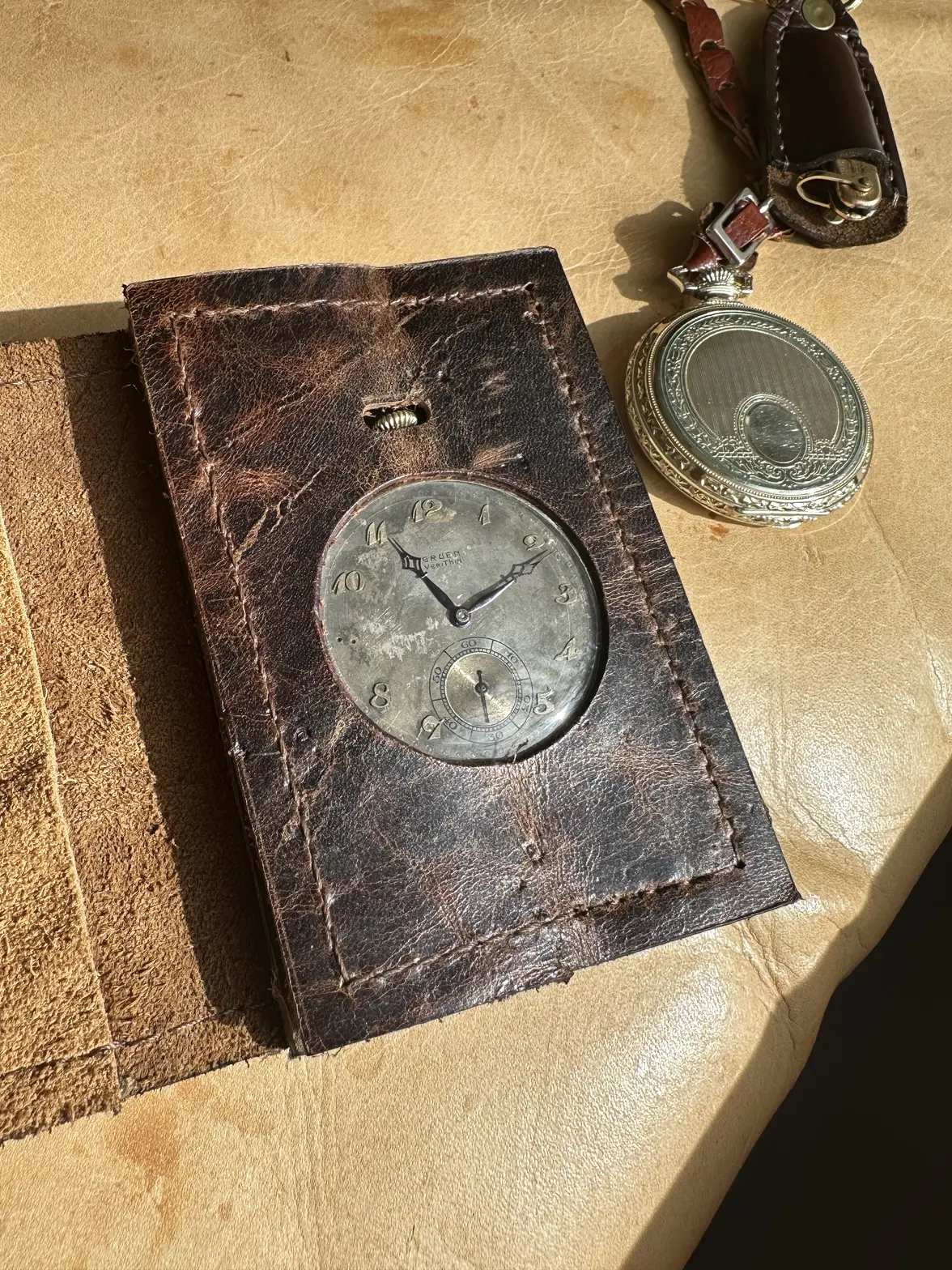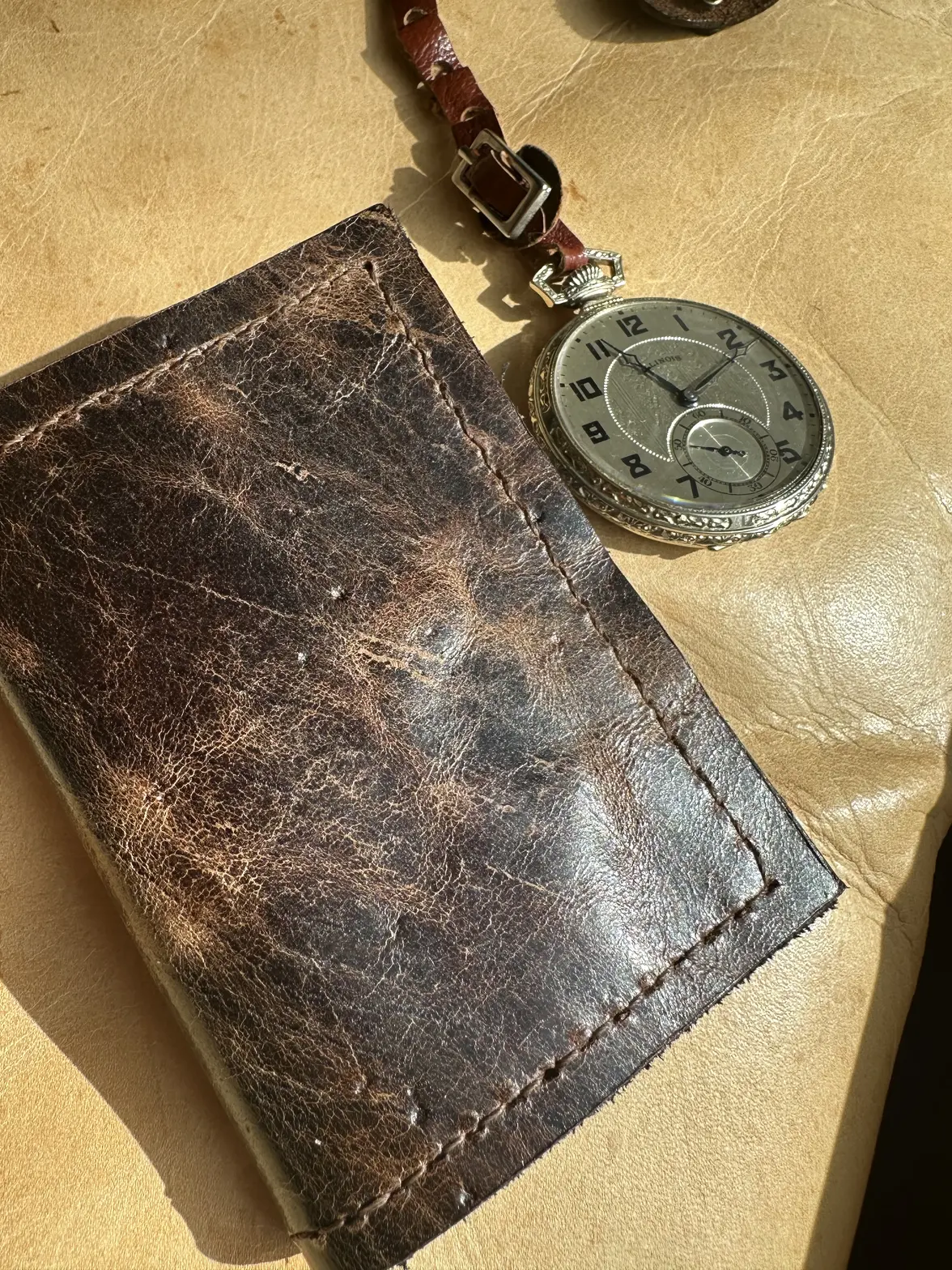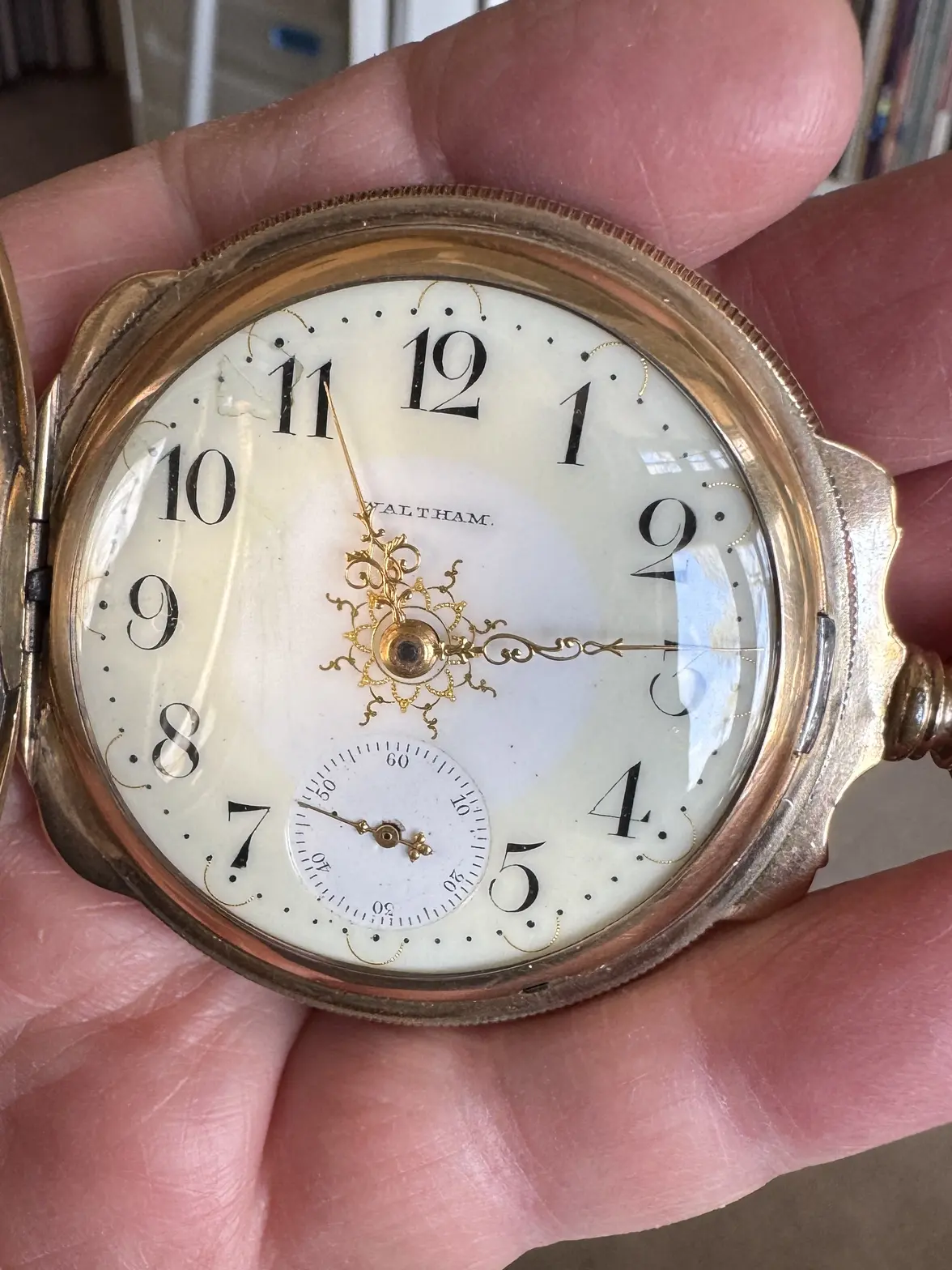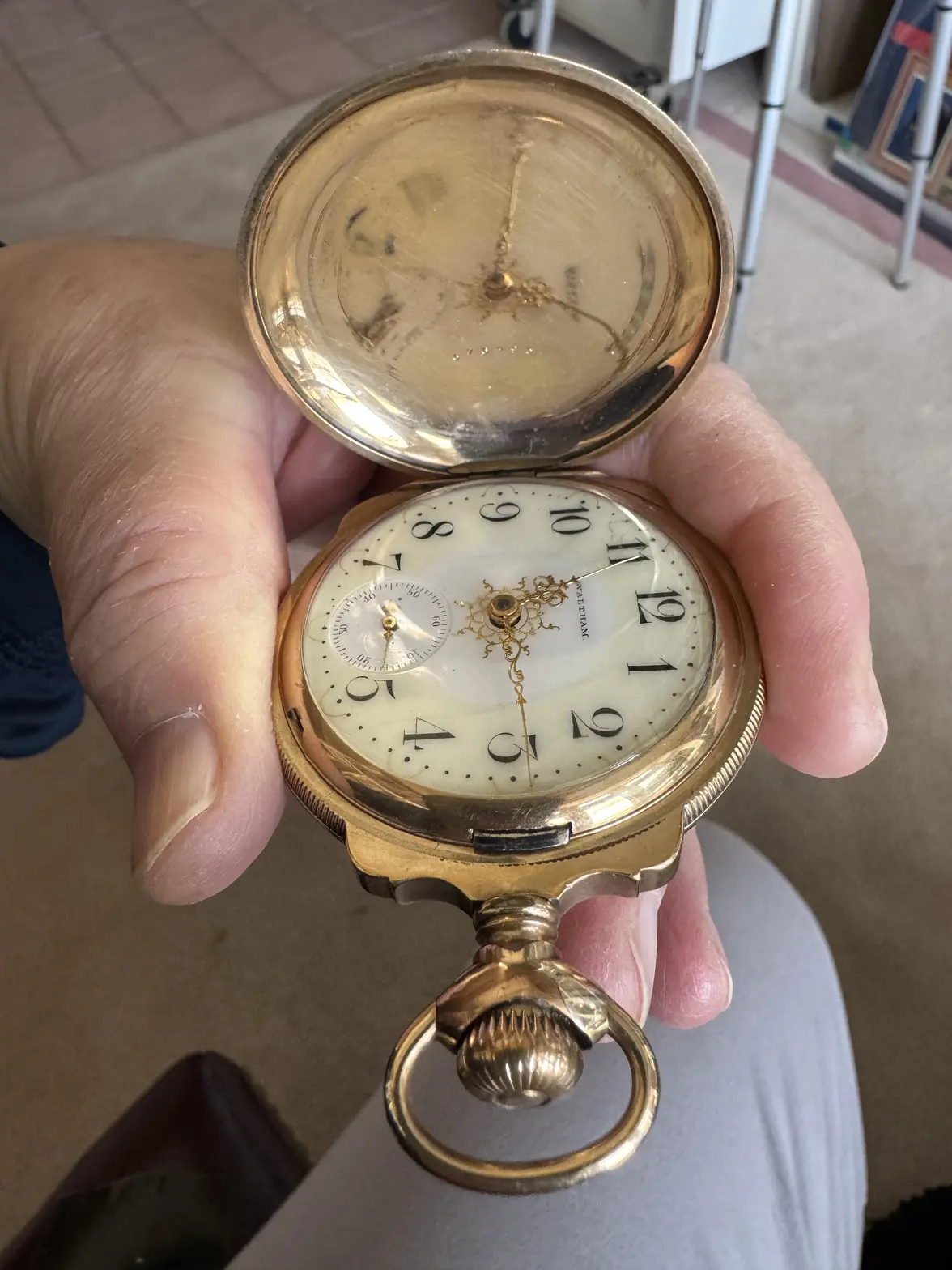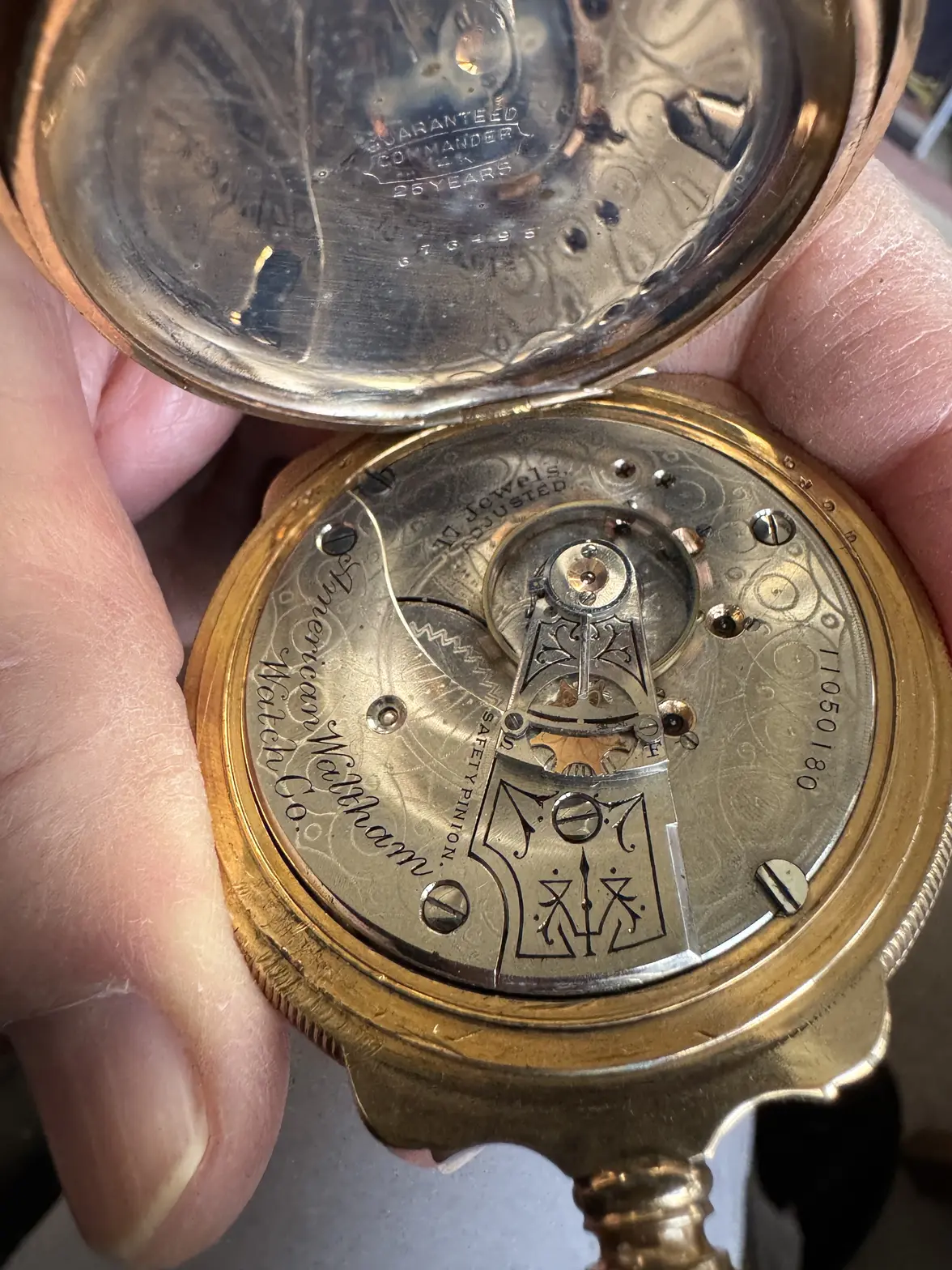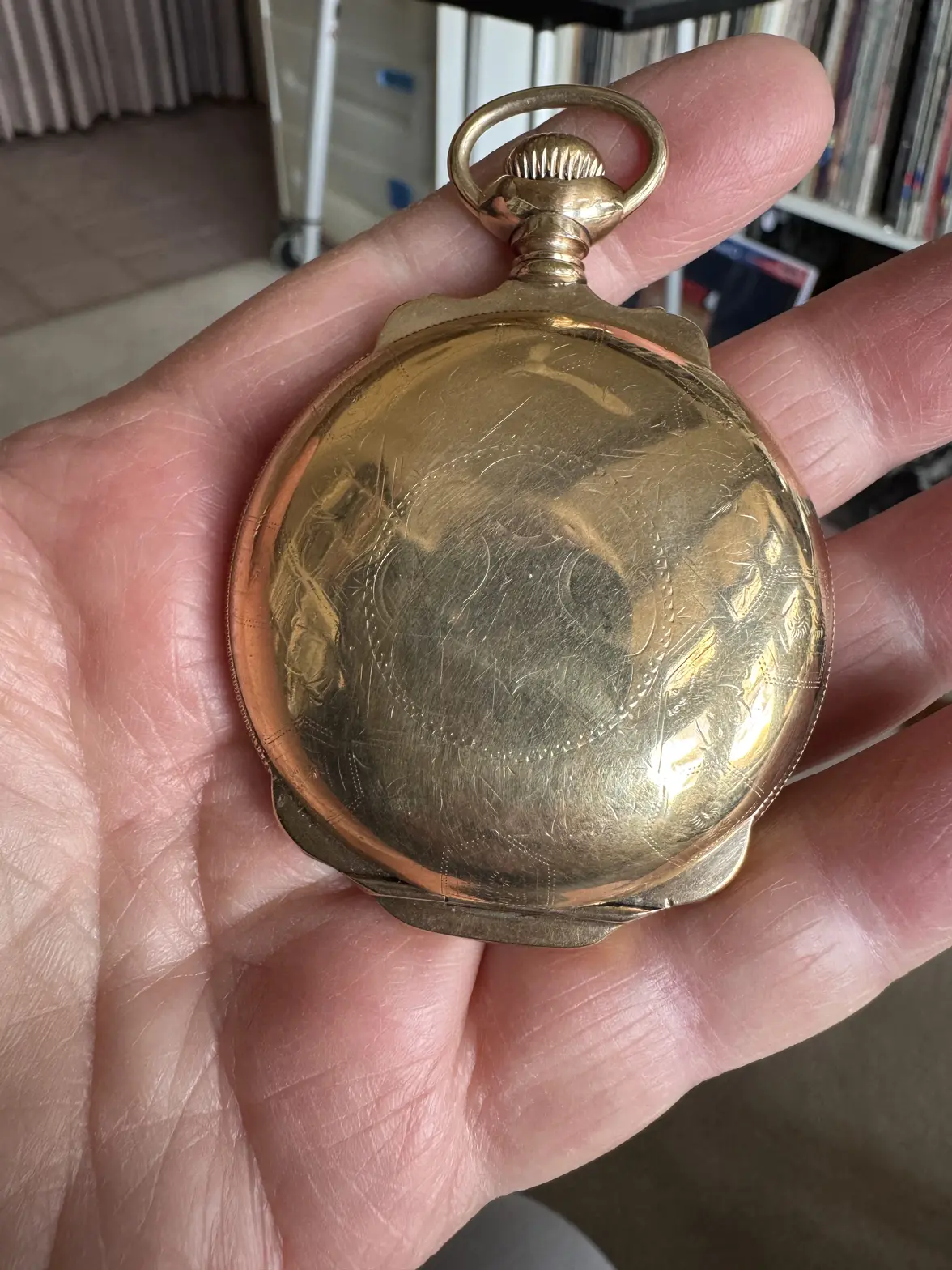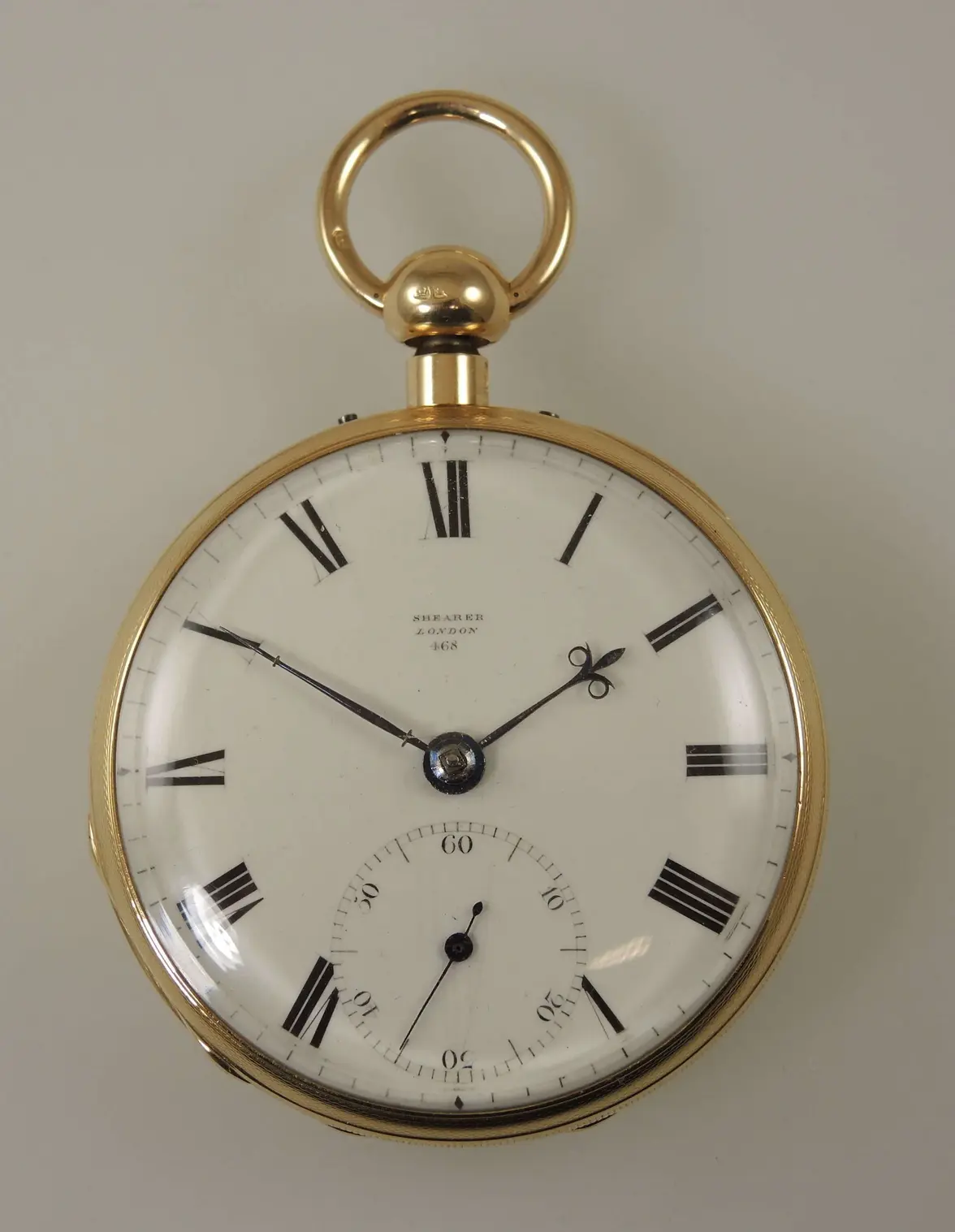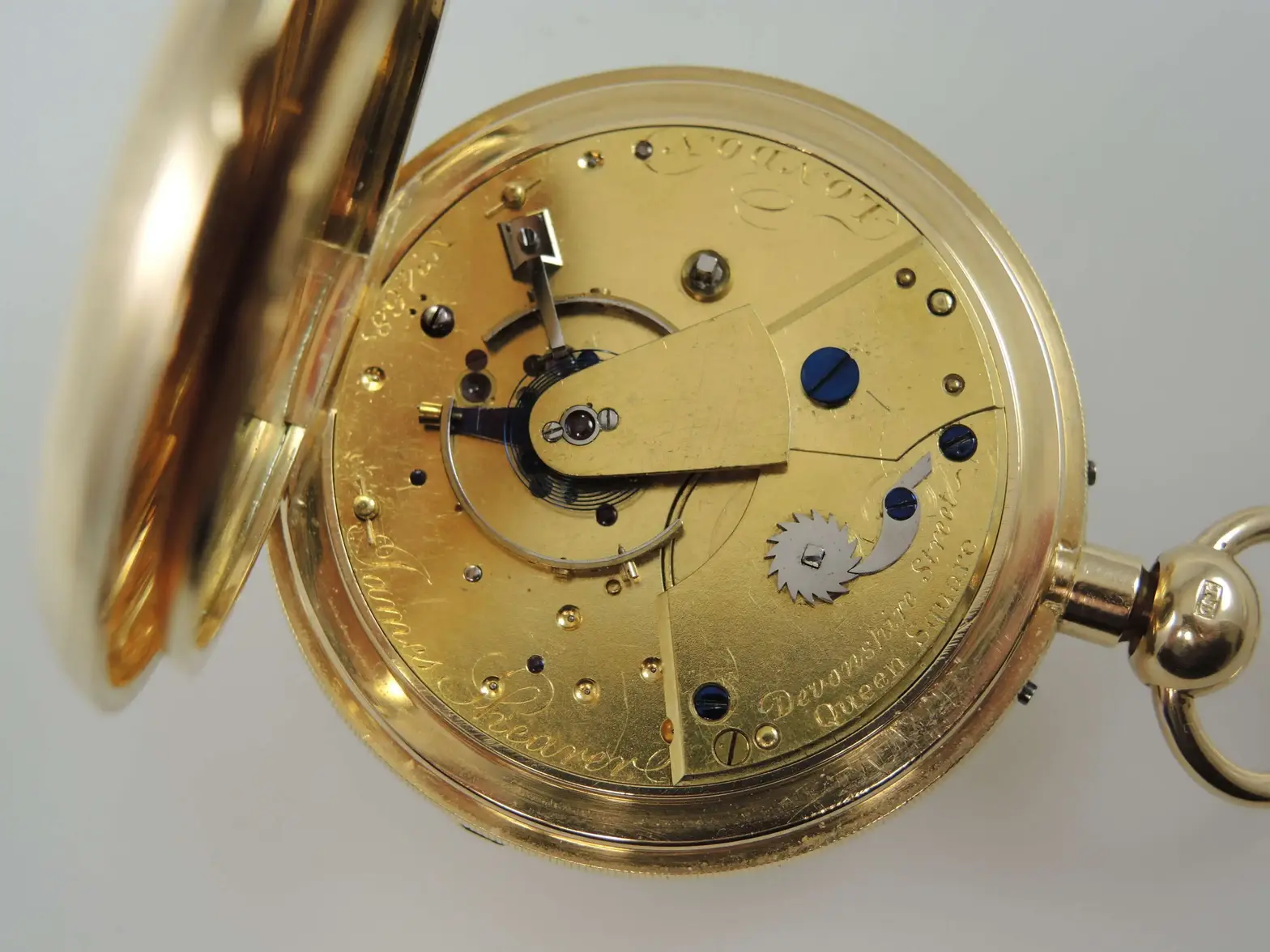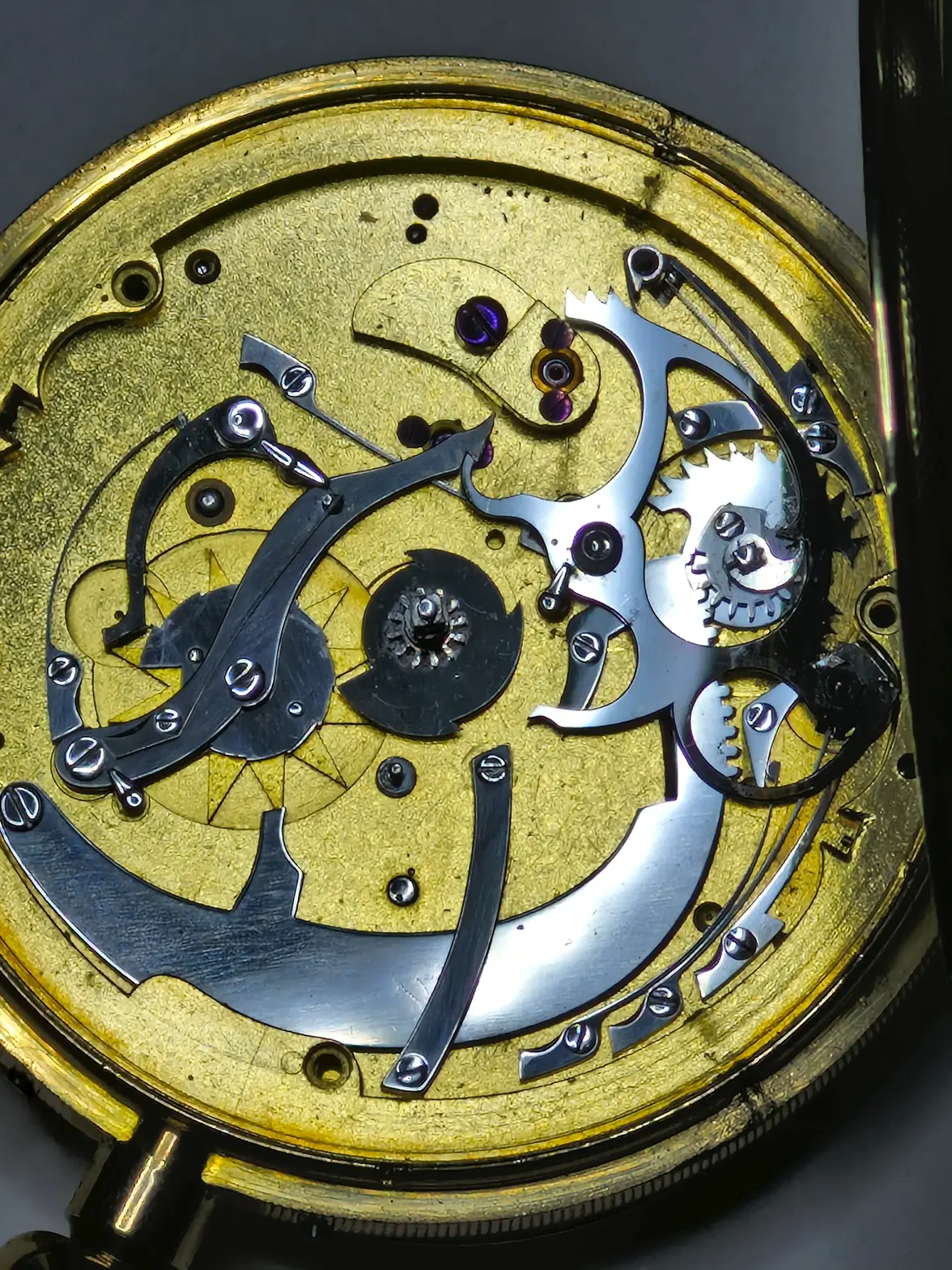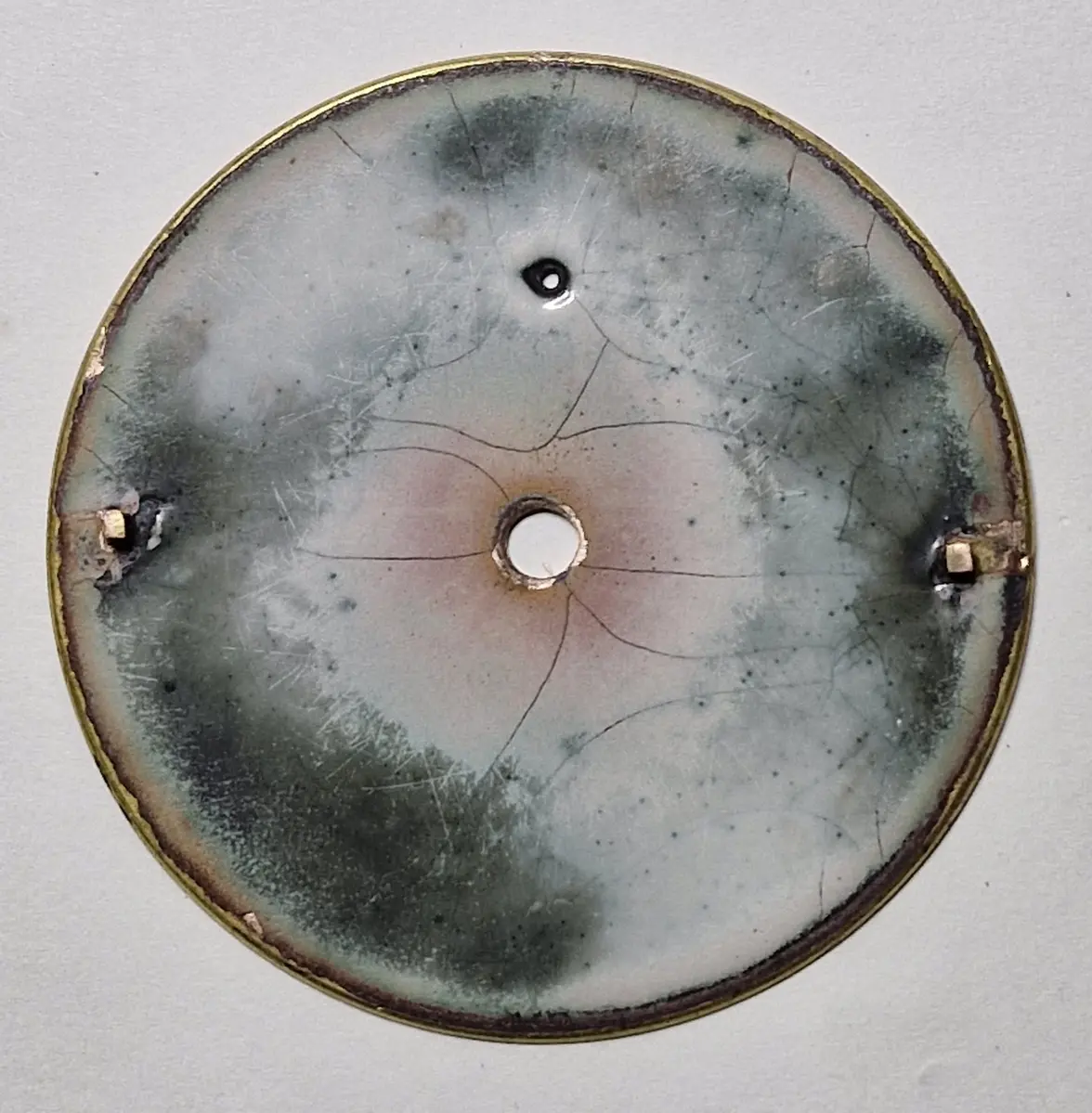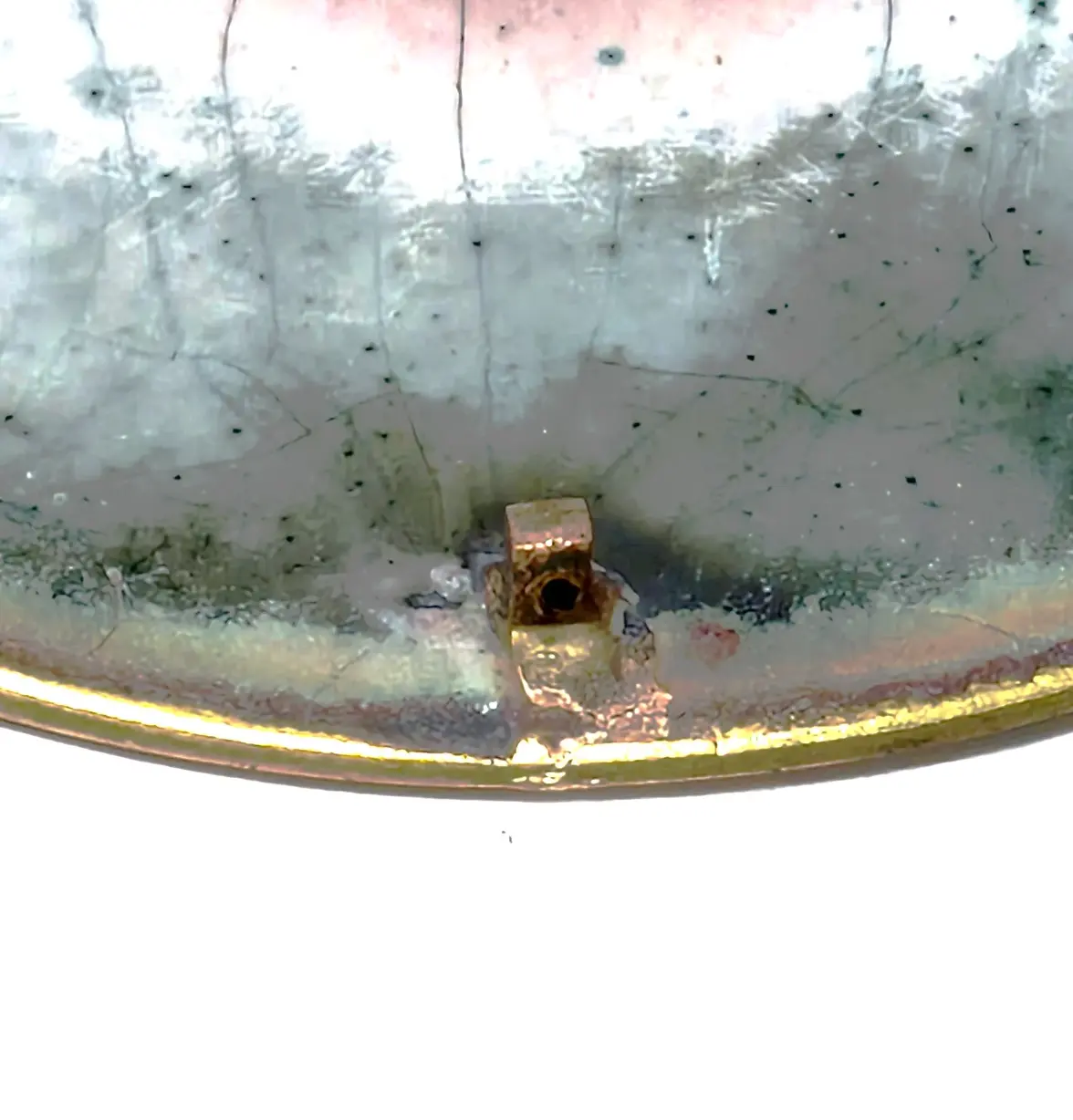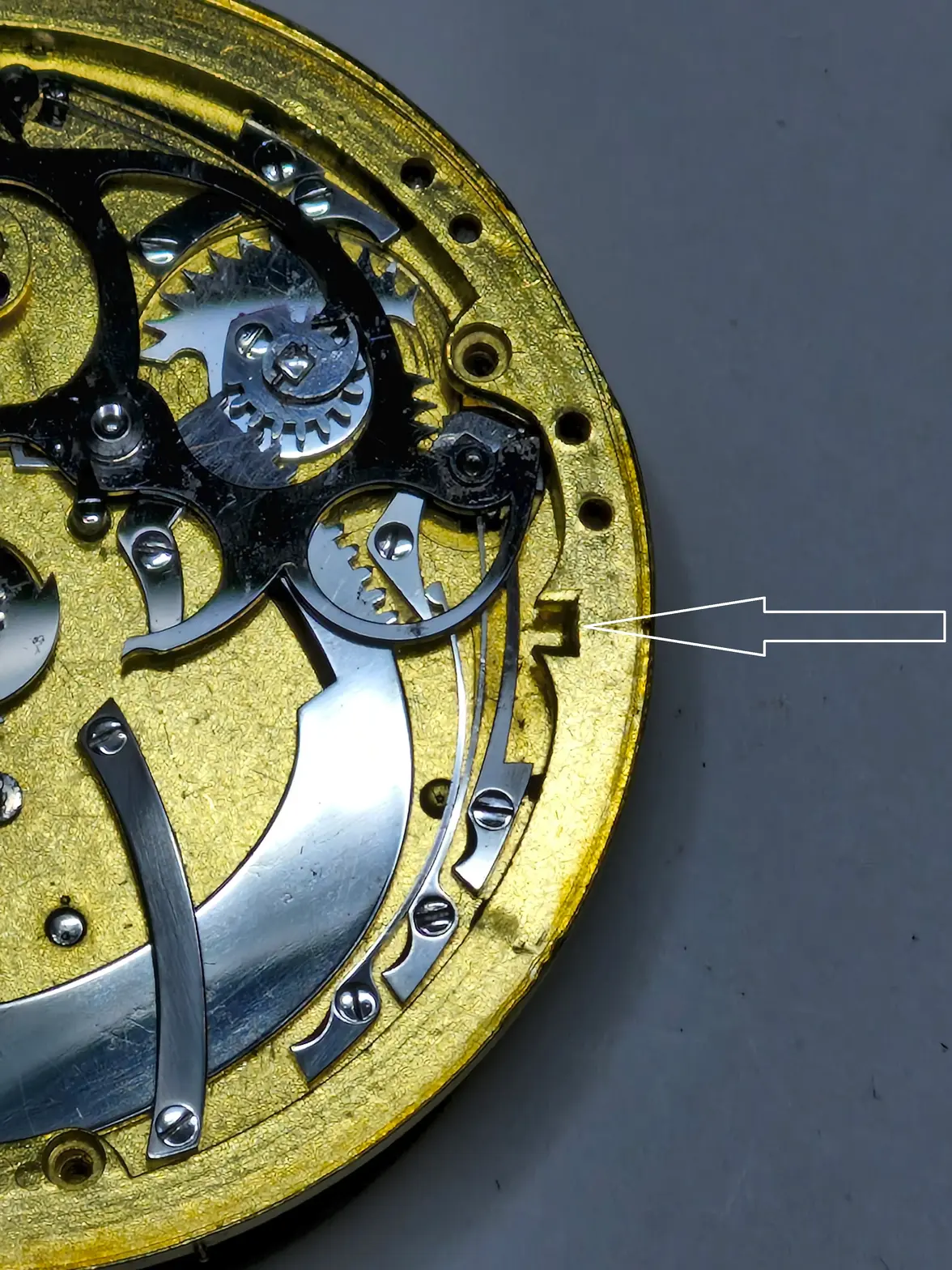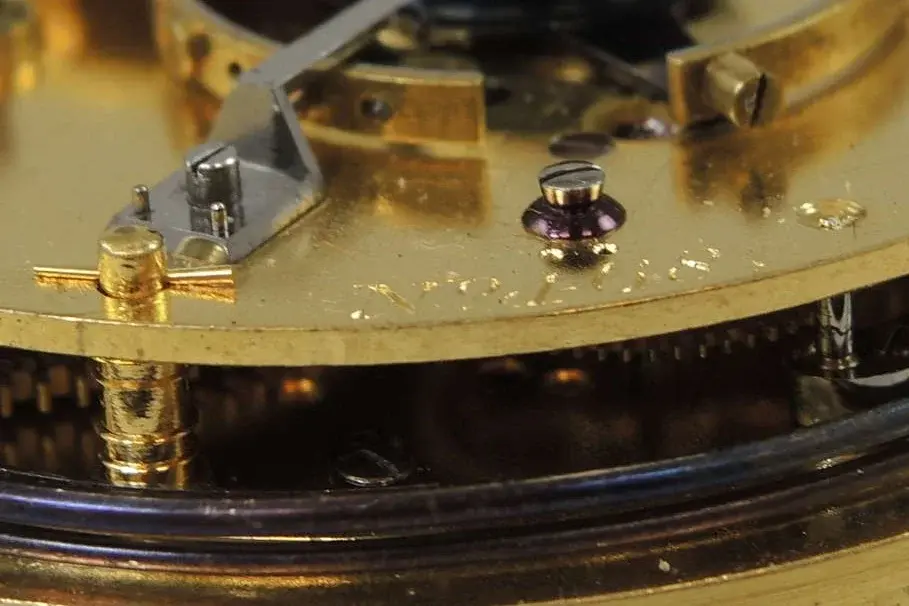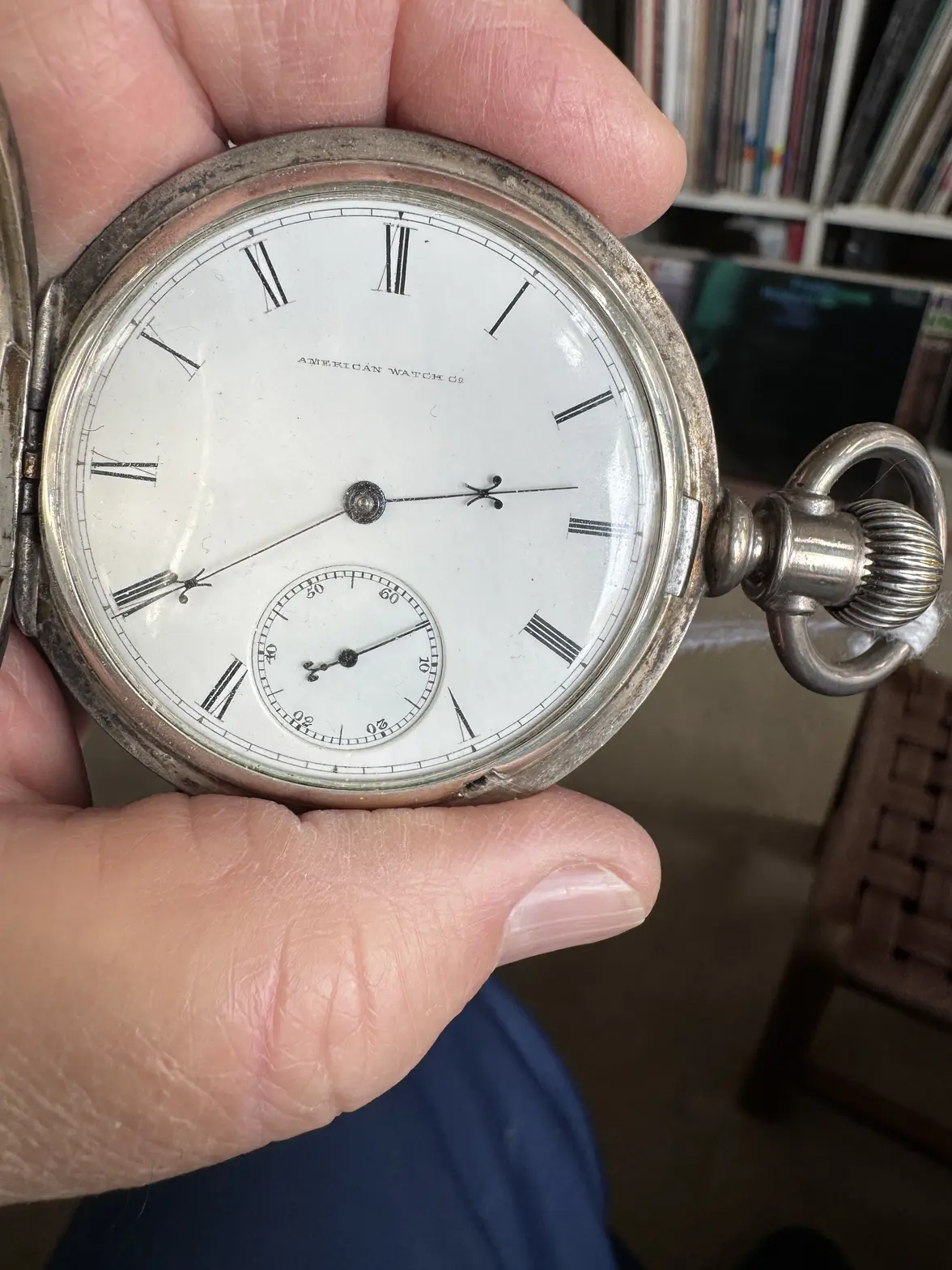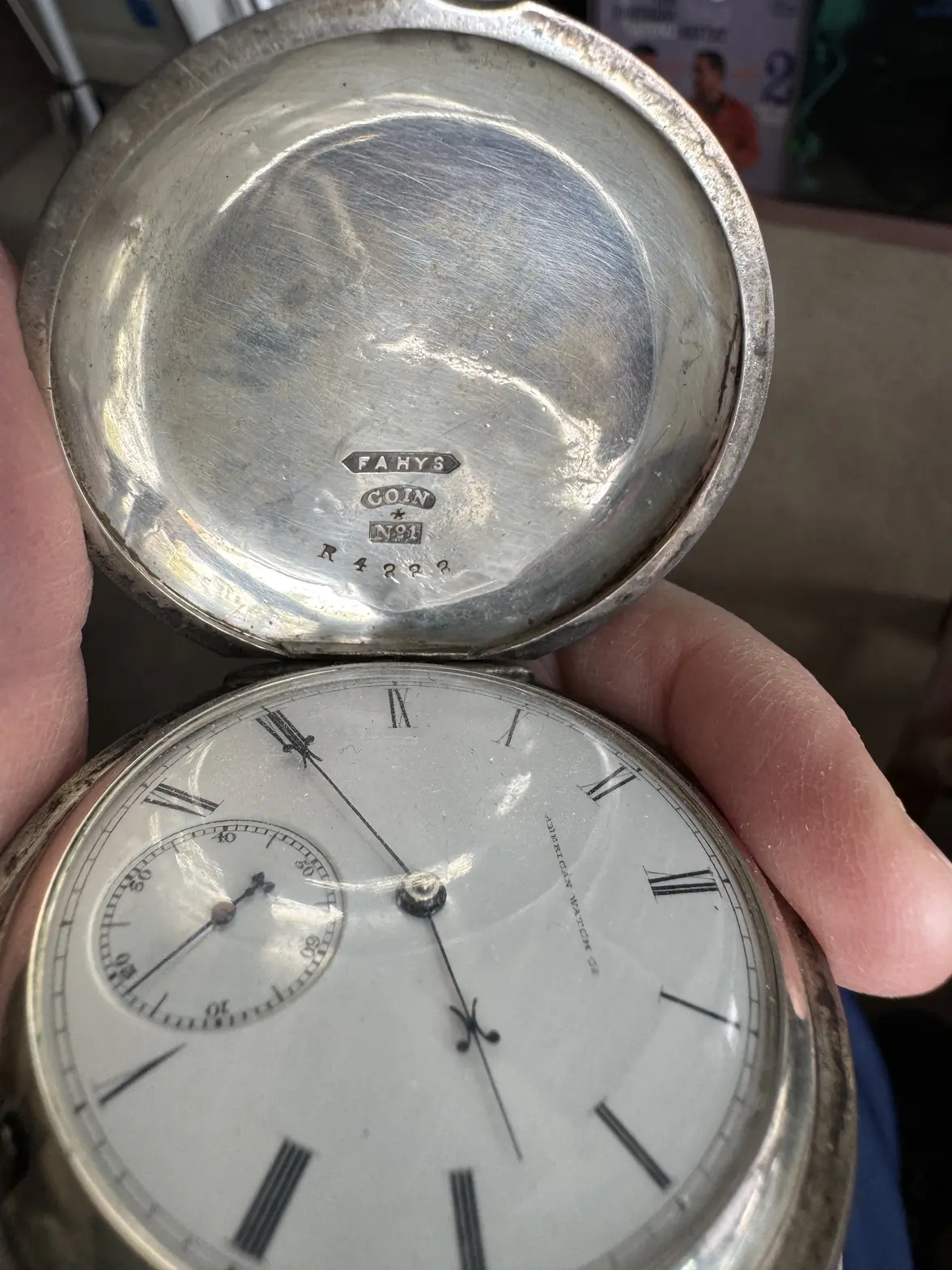Calling all Pocket Watch Buffs
TexOmega
·I recently won an auction on an American brand, which is lesser known for pocket watches. A Gruen Empire 26 from 1922, the case American (Gruen) in 14K white and yellow gold. The movement is caliber V1.5, the Gruen top of the range Swiss made movement. 21 jewels, 8 adjustments (5 positions, 2 temperatures and isochronism). And in really lovely condition. Even the glass seems original and of the bulleye kind (crystal).
Gruen mostly made their own cases, but this one was by Wadsworth with a nifty edge and hammered back.
Canuck
·Canuck warned me that the crystal on the Gruen is vulnerable. So I made this wallet that reminds me of my police credentials.
Very thin in indeed. Now… let’s see if I get the vomit emoji from Canuck.
Canuck
·This dial, on a donor Gruen in my stash is the dial that was offered to @Duracuir1 for his Gruen pocket watch. But it is also much like the dial that @TexOmega has on his Gruen pocket watch. But different movement in my donor watch.
ghce
·This dial, on a donor Gruen in my stash is the dial that was offered to @Duracuir1 for his Gruen pocket watch. But it is also much like the dial that @TexOmega has on his Gruen pocket watch. But different movement in my donor watch.
I prefer the look of those applied markers rather than the printed ones above, just seems to suit the size and styling more ( in my eyes).
Canuck
·I like it both ways.
TexOmega
·Bernhard J
·Here a few impressions regarding the extremely high standards in English watchmaking in the first few decades of the 1800s.
This is a repeater and the hands are wrong for the period (1831). I am having new ones made, in a period correct style (spade, yellow gold). And had to take measures for the new hands (minutes square and hour wheel), which made removal of the dial necessary.
The dial feet are rather unusual and have a square cross section with a recess for dial screws. And look at the locating cutouts for these feet in the base plate and the locking screws. All this perfectly designed for avoiding stress to the enamel of the dial.
And I am happy to see that the repeater work has virtually no corrosion after about 200 years. 🙂
Cheers, Bernhard
This is a repeater and the hands are wrong for the period (1831). I am having new ones made, in a period correct style (spade, yellow gold). And had to take measures for the new hands (minutes square and hour wheel), which made removal of the dial necessary.
The dial feet are rather unusual and have a square cross section with a recess for dial screws. And look at the locating cutouts for these feet in the base plate and the locking screws. All this perfectly designed for avoiding stress to the enamel of the dial.
And I am happy to see that the repeater work has virtually no corrosion after about 200 years. 🙂
Cheers, Bernhard
JimInOz
··Melbourne AustraliaPity many later manufacturers didn't employ the same dial feet, would have saved so many enamel dials.
Still, it's more cost saving involved in mass production, so the pins and screws won the race.
Can't wait to see the finished hands.
Still, it's more cost saving involved in mass production, so the pins and screws won the race.
Can't wait to see the finished hands.
Canuck
·Looking at the repeat mechanism, it appears to me to be a quarter repeater? The case, 18-karat? Is the movement equipped with a fusee? I see it is free sprung, so it appears to me to be of chronometer grade with that balance wheel. In consideration of the age, I was looking for a “bull’s eye” in the glass, but I don’t see one. The chime rods are the typical circular ones that fit within the case edge? The hammers for the chime rods? Yes, please let us see it with the new hands.
Bernhard J
·Yes, it is a quarter repeater in an 18K case, the case alone (with crystal only) having 80,0 g. Yes, with a fusee, of course. "Bull´s eye" crystals were rather rarely fitted to top grade watches in that era originally.
Regarding the escapement, it has a cylinder escapement and this seems very unusual at the time to be combined with a free sprung (early) Pennington compensation balance. This was what caught my attention initially. Close inspection of the movement then revealed that it either initially was a detent chronometer, or that the raw movement was designed to be fitted with both kinds of escapements as alternatives. The only tell tale is that holes for steady pins and a fixing screw for a detent foot are provided. The cylinder escape wheel is placed exactly where the detent escape wheel would have been. But there are speculations possible only. At that time English cylinder escapements were highly regarded (and very fine executed). And a customer might have chosen to prefer a cylinder escapement due to the fact that this is self starting, whereas a detent escapement is not, and even may stop running occassionally upon a "matching" movement of the watch (in most cases rotation around an axis of the balance). Insofar the cylinder escapement is the more practical escapement. On the other hand, the locating pins of a detent would have been placed in the plate after having made the detent. This would point to a later conversion. But if the detent was broken, it is rather unlikely that the customer, who had the money for such an expensive case, would not have the funds for having a new detent being made. But perhaps the customer had made the experience that the detent escapement occasionally stops, and upon needing to have the detent repaired chose the conversion to cylinder escapement for the above reasons.
Here you see the rods and the hammers. And the place where a detent was located or initially intended (whatever hypothesis you prefer).
Regarding the escapement, it has a cylinder escapement and this seems very unusual at the time to be combined with a free sprung (early) Pennington compensation balance. This was what caught my attention initially. Close inspection of the movement then revealed that it either initially was a detent chronometer, or that the raw movement was designed to be fitted with both kinds of escapements as alternatives. The only tell tale is that holes for steady pins and a fixing screw for a detent foot are provided. The cylinder escape wheel is placed exactly where the detent escape wheel would have been. But there are speculations possible only. At that time English cylinder escapements were highly regarded (and very fine executed). And a customer might have chosen to prefer a cylinder escapement due to the fact that this is self starting, whereas a detent escapement is not, and even may stop running occassionally upon a "matching" movement of the watch (in most cases rotation around an axis of the balance). Insofar the cylinder escapement is the more practical escapement. On the other hand, the locating pins of a detent would have been placed in the plate after having made the detent. This would point to a later conversion. But if the detent was broken, it is rather unlikely that the customer, who had the money for such an expensive case, would not have the funds for having a new detent being made. But perhaps the customer had made the experience that the detent escapement occasionally stops, and upon needing to have the detent repaired chose the conversion to cylinder escapement for the above reasons.
Here you see the rods and the hammers. And the place where a detent was located or initially intended (whatever hypothesis you prefer).
Alpha
··Kilt Owner, Beagle Parent, Omega CollectorCanuck
·Yes, it is a quarter repeater in an 18K case, the case alone (with crystal only) having 80,0 g. Yes, with a fusee, of course. "Bull´s eye" crystals were rather rarely fitted to top grade watches in that era originally.
Regarding the escapement, it has a cylinder escapement and this seems very unusual at the time to be combined with a free sprung (early) Pennington compensation balance. This was what caught my attention initially. Close inspection of the movement then revealed that it either initially was a detent chronometer, or that the raw movement was designed to be fitted with both kinds of escapements as alternatives. The only tell tale is that holes for steady pins and a fixing screw for a detent foot are provided. The cylinder escape wheel is placed exactly where the detent escape wheel would have been. But there are speculations possible only. At that time English cylinder escapements were highly regarded (and very fine executed). And a customer might have chosen to prefer a cylinder escapement due to the fact that this is self starting, whereas a detent escapement is not, and even may stop running occassionally upon a "matching" movement of the watch (in most cases rotation around an axis of the balance). Insofar the cylinder escapement is the more practical escapement. On the other hand, the locating pins of a detent would have been placed in the plate after having made the detent. This would point to a later conversion. But if the detent was broken, it is rather unlikely that the customer, who had the money for such an expensive case, would not have the funds for having a new detent being made. But perhaps the customer had made the experience that the detent escapement occasionally stops, and upon needing to have the detent repaired chose the conversion to cylinder escapement for the above reasons.
Here you see the rods and the hammers. And the place where a detent was located or initially intended (whatever hypothesis you prefer).
A MOST interesting watch! Thank you for your very lucid description of the features I enquired about. Generally, my opinion on cylinder escapements is a result of the typical cylinder escapements I have run into. However, about 30 years ago, I had a chance to examine a watch by English maker John Sewill which had a RUBY cylinder! It was a beautiful watch in every respect. It motioned like a high grade lever escapement. It was a repeater made for Maximo Tajes, an Uruguayan dictator, late in the 1890s. Note the distinctive dial.
Bernhard J
·Yes, the "typical" 1850 - 1920 Swiss cylinder escapement mass production watches are less impressing. 😎
TexOmega
·TexOmega
·And did you catch the subdial? Must have been a Monday......😎
Waltesefalcon
·That sub dial alone makes that example worth having.
